Recent Water Damage Posts
Spotting Water Damage on Your Roof
9/1/2022 (Permalink)
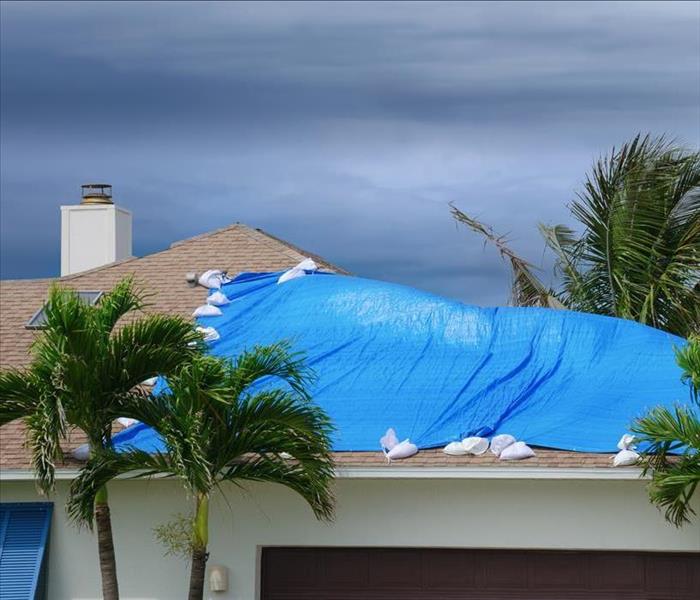 Checking for signs of roof water damage is critical to maintaining the integrity of your home.
Checking for signs of roof water damage is critical to maintaining the integrity of your home.
Homeowners have to pay a lot of money to keep their homes well maintained and properly functional. One of the biggest expenses typically comes in 20-30 years after the home is built, and that expense is roof replacement. Most homeowners will do anything possible to avoid replacing their roofs. From patching up issues to keeping their roofs free from tree branches and other hazards, it is important to keep up with roof maintenance in order to circumvent costly issues in the future.
Checking for signs of roof water damage is critical to maintaining the integrity of your home. In doing so, many homeowners are able to not only prevent major issues from occurring, but they are also able to address problems right away and save both time and money. The following are some of the most notable signs of water damage on your roof:
Gutter Issues
When a roof has water damage you can often find granules in the gutters. Granules are tiny particles composed of crushed stone or other materials that are used in roof shingles. Finding a notable about of granules in your gutter is a possible sign that you have roof water damage.
Damage Shingles
Wear and tear is inevitable when it comes to roof shingles. If you spot a lot of damaged or cracked shingles, it may be a sign that water damage is occurring or imminent.
Ceiling or Exterior Walls Have Water Spots
If you see rusty or brown spots along your ceilings or exterior walls it is likely due to some kind of water damage, particularly coming from the roof. You may also notice that the ceilings or walls are bubbling, warped, or otherwise compromised. This is something that should be addressed as soon as possible.
Additionally, soft wood decking and roof debris can both be indications of water damage on your roof. Be sure to take a proactive approach by conducting regular roof maintenance. Most importantly, if any of the above signs are identified in your home, you need to contact water damage specialists right away. At SERVPRO of North Palm Beach County we have decades of experience in water damage restoration. Contact our office today to learn more.
Recognizing Leaky Pipes in Your Home
5/17/2022 (Permalink)
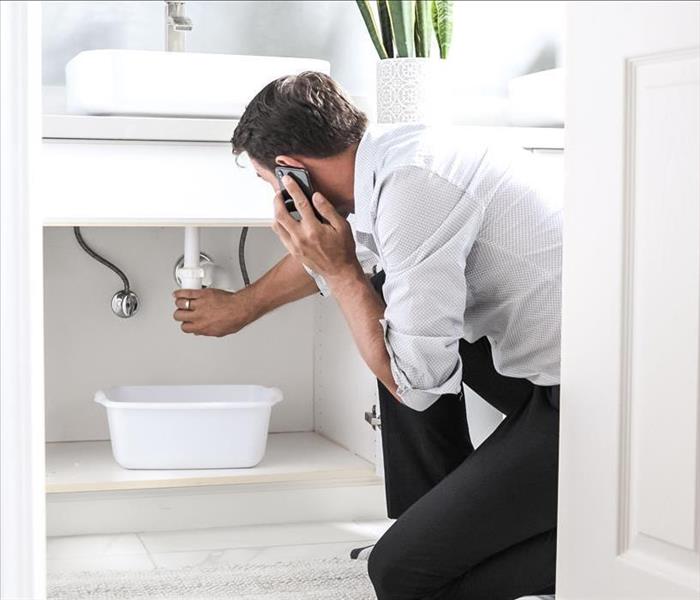 Early detection can save you thousands in water damage from leaking pipes.
Early detection can save you thousands in water damage from leaking pipes.
The Environmental Protection Agency (EPA) asserts that water leaks in the home account for almost 10,000 gallons of water wasted each year. Water leaks lead to costly water damage. Many of these leaks are from worn toilet flappers, dripping faucets, and other leaky valves. Often, these types of leaks are easy and inexpensive to fix which can save homeowners approximately 10 percent on their water bills. Unfortunately, leaky pipes can be difficult to spot since they are in hidden locations like walls and under sinks. The trick is knowing the signs and what to do should you find a leak in your home. Early detection can save your home from further, costly water damage.
Here are signs that you might have a leaking pipe and what to do should you spot one.
Abnormally High Water Bill
If your water bill drastically increases for no apparent reason, it is likely that you have a water leak somewhere in your house. Even a minor leak, can waste thousands of gallons of water and impact your water bill. The Environmental Protection Agency advises homeowners to check their water usage during January or February. If a family of four uses more than 12,000 gallons per month, there is most likely a serious leak (or leaks) in the home.
Water Meter Reveals a Leak
Check your water meter’s leak indicator to see if it is moving. If the dial is moving, you most likely have a leak. You can also check your water usage when the house is empty. Note the numbers on the water meter before leaving and upon return. If the meter has moved, you have a leak.
Reduced Water Pressure
When you have a leaking pipe, less water is running through the pipes. If there is a sudden decrease in water pressure, it may indicate a leak somewhere throughout the pipes.
Water Stains and Damaged Ceilings
Look up at your ceiling. Are there any discolorations or dark spots? These spots are usually a sign on leakage. If the dark spot is below a bathroom, you have evidence of the most probable source of the leak. If the damage is to the ceiling on the top floor of the house, it often indicates a leak in the roof. Visible water damage to the ceiling means the leak has been present for a while. In this circumstance, it is essential that you address the problem as soon as it is discovered.
Floor Stains
Discoloration, warping, and bubbling of your floor is another tell-tale mark of a leaky pipe. Fix the pipes and then address the flooring underneath.
Foundation Cracks
Cracks in the foundation of your home may be from water damage. However, not all foundation cracks arise from leaky pipes. Time and wear and tear may be the source of the cracks. Still, you should have it looked at by a professional.
Mold and Mildew
Mold and mildew is often visible and odorous. It is the result of moisture or standing water. Mold and mildew presents as black or dark green spots and emits a musty smell. If left untreated, it will grow and spread causing further damage. Do not ignore a musty odor in your house. Find the cause and resolve the problem immediately.
Running or Dripping Water Noises
Listen to your home. Trickling or dripping water sounds are an indicator that there is a problem with the plumbing. Call a water damage specialist and have it looked at right away.
When dealing with leaking pipes, time is of the essence. Have the situation evaluated and addressed as quickly as possible. Early detection can save you thousands in water damage from leaking pipes. Use these guidelines to ensure your home is safe from devastating damage.
Flooding in the State of Florida
3/29/2022 (Permalink)
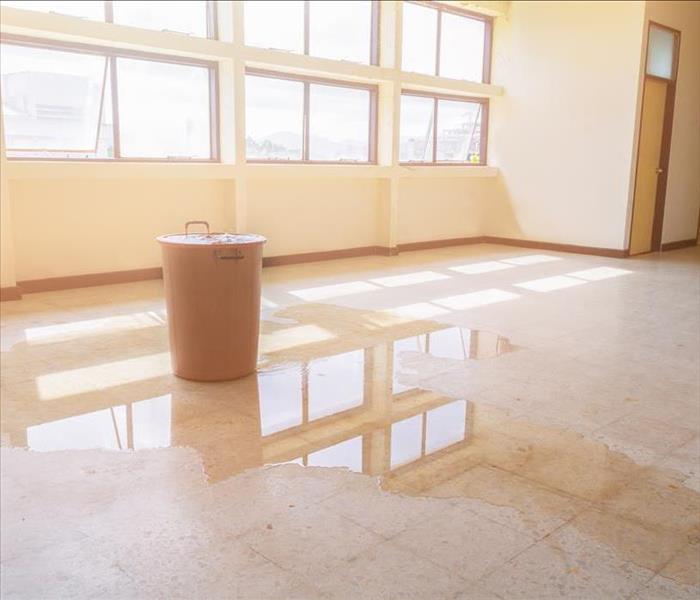 As a dangerous storm approaches, it is critical that Florida residents make every effort to prepare for a possible flood.
As a dangerous storm approaches, it is critical that Florida residents make every effort to prepare for a possible flood.
Flooding in Florida is all too common. In fact, Florida flooding is among the Sunshine State’s biggest and most frequent hazards. As a peninsula state, Florida is surround on three sides with ocean water. Plus, Florida often finds itself in the middle of hurricane season’s largest storms. These factors combine to make Florida, especially South Florida, a target for potential flooding. Over the next 30 years, 25 percent of all properties in the state of Florida will be at risk of serious flooding.
South Florida residents, especially those living on or near a coast, must maintain a vigilant eye and be aware of potential flooding issues. There have been a number of very serious floods in history, and the risk continues to expand. Some of the most notable floods include:
- Tropical Storm Debby, 2012
- Tropical Storm Fay, 2008
- Hurricane Dora, 1964
- Cape Sable Hurricane, 1947
- Okeechobee Hurricane, 1928
The subtropical climate in Florida means that flooding is always possible. In addition to the climate, the hundreds of miles of coastline create a serious concern. Florida residents in the following regions should pay extra attention to flood warnings:
- Fort Meyers
- Miami
- Sarasota
- Tampa
As a dangerous storm approaches, it is critical that Florida residents make every effort to prepare for a possible flood. Water damage should be avoided at all cost. However, if the unavoidable occurs, it is important to contact a water damage restoration team right away. For more information, contact SERVPRO of North Palm Beach County right away and our storm damage restoration experts will answer all of your questions.
Keeping Your Garage Free from Water Damage
1/24/2022 (Permalink)
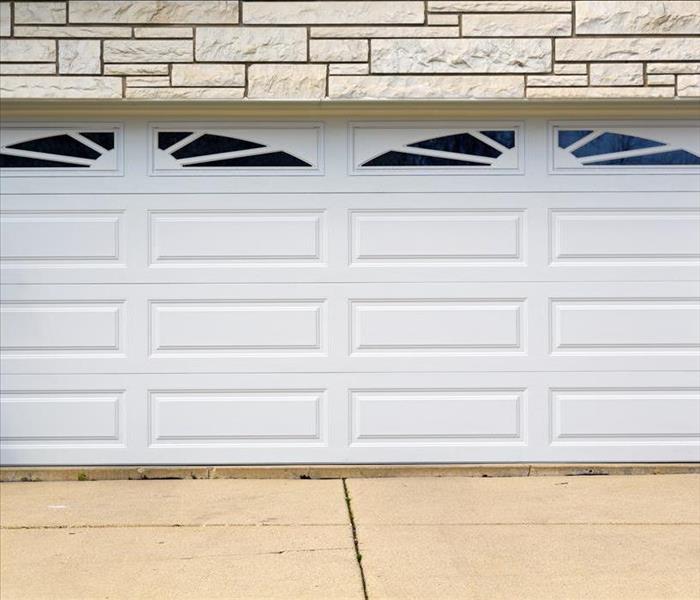 The spring and summer months bring hurricanes, heavy rains, tropical storms, and unpredictable wetness that present a threat to homes in South Florida
The spring and summer months bring hurricanes, heavy rains, tropical storms, and unpredictable wetness that present a threat to homes in South Florida
While the days are quite cold now in South Florida, we are not too far away from the spring season. When April rolls around, the temperatures will rise and the rains will come, which means that Florida homeowners need to be prepared. The spring and summer months bring hurricanes, heavy rains, tropical storms, and unpredictable wetness that presents a threat to homes throughout South Florida. When people prepare for water damage, they typically think about protecting their kitchens, bathrooms, and even laundry rooms. They rarely think about their garage, but that is an area of the home that is also vulnerable to water damage.
Water damage in the garage would likely be less costly than the kitchen or bathroom, but preventing any water damage from occurring in the first place is ideal. When the Florida rains become heavy, there is often flooding. Flooding can lead to water damage throughout the floors and walls of the garage, in addition to other property being stored in the garage. The following are some important tips to keep in mind in order to keep your garage free from water damage:
- Make sure that the water heater is in good condition and not producing any leaks
- Regularly inspect the garage roof for any leaks
- Replace the garage door panels when necessary
- Make sure that the gutters near the garage are cleared
- Replace the weather stripping frequently, as it gets worn quickly and need to be kept in good condition to work properly
- Keep your garage door closed, especially during the spring and summer months
While some water damage is inevitable in a major storm, the above tips will give your garage, and its contents, the best chance to remain free of water damage. Far too many people underestimate the potential risks that come with garage water damage and end up paying for costly repairs and replacements of the garage’s contents. For more information about water damage remediation in your garage contact SERVPRO of North Palm Beach County today.
Signs of Damage on Your Boat
12/8/2021 (Permalink)
 To keep your boat healthy and running smoothly, boat maintenance is an essential part of being a boat owner.
To keep your boat healthy and running smoothly, boat maintenance is an essential part of being a boat owner.
While there are many joys that come with owning a boat and taking it out on the water, there is also time and energy required to inspect, upkeep, and maintain your boat. Under normal use, and depending on the water and weather conditions, all boats will begin to show wear and tear damage. To keep your boat healthy and running smoothly, boat maintenance is an essential part of being a boat owner.
Although boats are obviously meant to be in the water, but you cannot underestimate the potential damage that water and moisture may have on your boat. With a little bit of knowledge and practice, boat maintenance can become easy. The first step is knowing what telltale signs of water damage to look for on your boat. Here are some of the most identifiable signs of boat damage:
Steering Issues
If your boat is not steering like normal, it is likely a larger issue that you need to investigate. Whether you are just experiencing more resistance than normal or you are unable to steer altogether, this can point to many different issues such as a leak in the hydraulic fuel lines,
a mechanical failure, corrosion on the steering cables, or grease entering the support tubes. No matter the culprit, a steering issue is a sign of damage you need to inspect.
Leaks or Large Amounts of Water in the Hull
While it is normal for your boat to hold some water, large amounts of splashing water or leaks, dents, or corrosion can all be a sign of water damage. One of the biggest fears for a boat owner is a crack in the hull, and depending on the severity, it can sink your boat. This damage can likely come from rocks or other debris underwater. At the first sight of a leak or water damage, it is important to address the cause immediately.
Sputtering or a Power Outage
Imagine the disappointment of attempting to accelerate your boat and you are met with your power sputtering. While this may just happen when your boat runs out of gas, if your gas gauge is full and your power sputters or shuts off completely, it is likely a major issue. Whether you need to replace your filters, change your spark plugs, or address an electrical issue, it is time for a boat repair.
Your Boat Won’t Start
The only thing more disappointing than a power sputter is your boat not starting all together. If you have enough fuel, checked the battery, and followed the proper starting sequence, a mechanic will likely need to check your boat for repair.
Watching your boat’s interior for water damage is essential to making sure your boat’s life is extended as long as possible. At SERVPRO of North Palm Beach County, we know all about boat water damage. Contact our water damage restoration team today to learn more!
Leaking Pipes and Water Damage
10/14/2021 (Permalink)
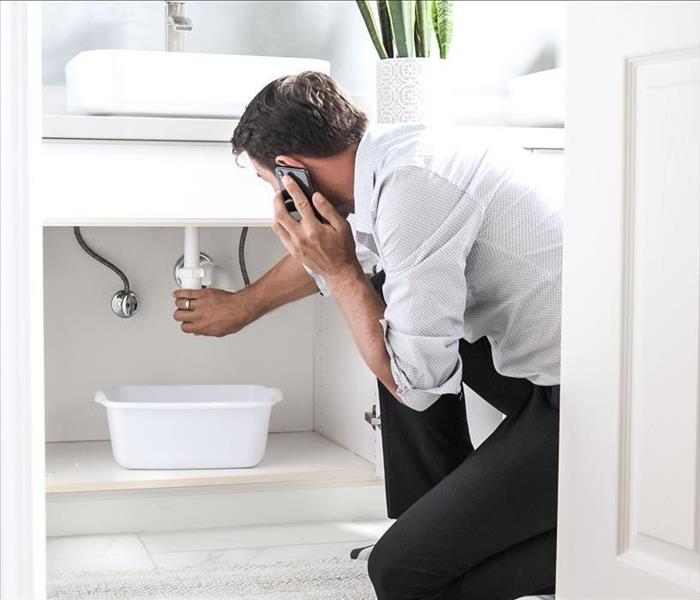 Water damage due to leaking pipes can cause major issues if not detected early on.
Water damage due to leaking pipes can cause major issues if not detected early on.
Homeowners have a lot on their plate when it comes to home maintenance and improvements. While some issues are more of a concern than others, it is important to have a good understanding of the safety and function of any home. From home renovations to addressing regular wear and tear, house maintenance means staying on top of what needs to be done and acting quickly when a potentially damaging situation presents itself. Water damage is one of the most common and costly types of damage that can occur in a home.
While water damage sources vary drastically, leaking pipes are one of the most common issues that a homeowner has to deal with. If recognized early, leaking pipes will likely be a simple and inexpensive fix. If a leaking pipe goes unnoticed for a period of time, however, the water damage is likely to be challenging and costly to repair. Leaking pipes are most often found near toilets, faucets, or any other type of valve that exists in the home. So, it is important to pay close attention to these areas in order to catch a leak as early on as possible.
While some leaks are extremely obvious (water pooling on the floor of the bathroom), some are really hard to detect. Being aware of what to keep an eye on is critical to detecting a leaking pipe early and taking appropriate action to repair the water damage. The following are some important tips to keep in mind when it comes to leaking pipes and water damage:
- Test your toilet by dropping food coloring into the tank and then inspecting the bowl about 10 minutes later to see if any color came through
- Inspect old faucets for leaks, look closely at gaskets and washers
- Try to check the pipes throughout the home for water leaks every few months
- Pay careful attention to the water bill each month and investigate causes for any increases
Water damage due to leaking pipes can cause major issues if not detected early on. As always, you can count on SERVPRO of North Palm Beach County to handle any water damage repair and restoration. Call our office today to learn more.
Water Damage in Your Laundry Room
8/26/2021 (Permalink)
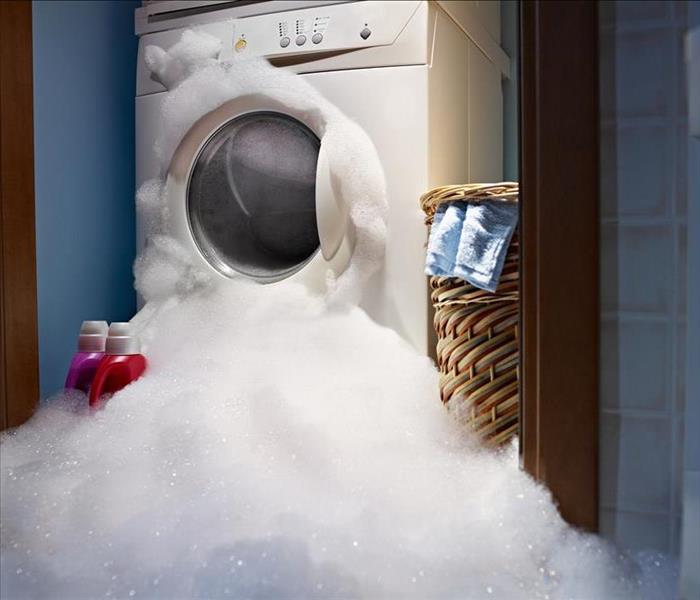 Water damage in the laundry room is a problem that can quickly become a disaster.
Water damage in the laundry room is a problem that can quickly become a disaster.
Any room in the home that has appliances in it is a potential water damage issue. From the kitchen to the garage, there are a number of potential water hotspots that can wreak havoc on a home if they malfunction or overflow. Most people think of dishwashers or hot water heaters causing water damage in a home, but there is another major appliance that carries a big risk of water damage. The washing machine holds enormous quantities of water and therefore poses a threat to the laundry room.
When water damage occurs in the laundry room it is typically costly, this is because the amount of water held in a washing machine can quickly damage the small room. A lot of water combined with a small surface area creates a recipe for disaster. Generally speaking, laundry room water damage is caused by one of the following two scenarios:
- A broken water supply, which can cause a sizable amount of water damage in one swift occurrence
- Slow drip that steadily occurs over time and gradually causes water damage
Laundry room damage is expensive and stressful for a homeowner. As such, it is prudent to take every measure possible to avoid it from happening. The following are some important pieces of advice for trying to reduce the likelihood of water damage in your laundry room:
- If your washing machine did not come with a water tray install one
- Make a note to clean your washing machine filter on a regular basis
- Consider buying an automatic water shutoff valve
- Unload the washing machine as soon as the load finishes
- Each month the washing machine line should be checked
- Turn off your water when you are not using the machine
Water damage in the laundry room is a problem that can quickly become a disaster. Following the above pieces of advice will prove to be crucial in preventing such damage from occurring. At SERVPRO of North Palm Beach County, we are laundry room water damage experts. Our team is available 24 hours a day, 7 days a week to handle water damage issues both big and small. Call our office today to learn more.
Methods of Contents Restoration After Water Damage
7/6/2021 (Permalink)
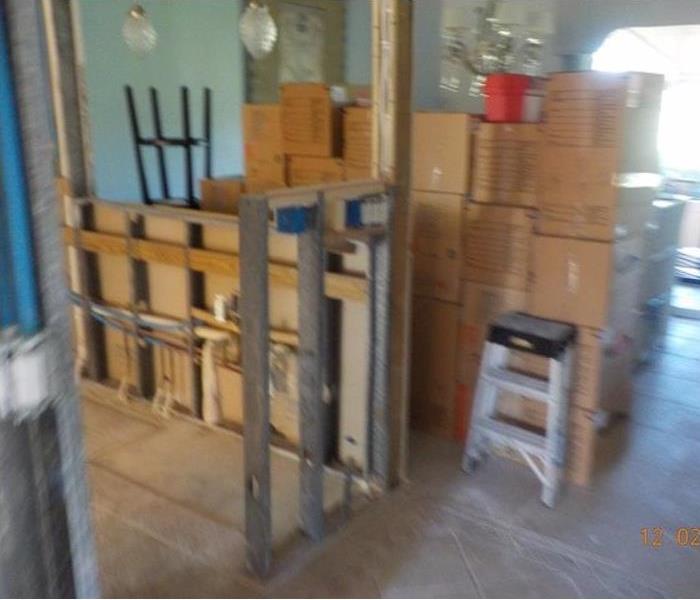 The process of water restoration ensures that your home returns to a livable and pre-damaged condition.
The process of water restoration ensures that your home returns to a livable and pre-damaged condition.
After water damage, some of the items in your home may never be the same. Luckily, there are many types of contents restoration that can be completed after water damage to remove excess liquid and recover some of your items. The process of water restoration ensures that your home returns to a livable and pre-damaged condition.
What is Contents Restoration?
Contents restoration is used to restore your salvageable items after water damage. Some of these technologies are so advanced that they can save items like textiles, clothes, hard goods, photos, and electronics that was previously not possible. While not every item can be saved, in the hands of a professional you have a large chance of your items returning to the condition they were in before.
Types of Contents Restoration
Unfortunately, there is more to the content restoration process than just letting your items dry. There are several methods of cleaning to restore your household items. Depending on the type of material and the level of water damage, the content restoration methods differ. Some of the most common strategies include:
Dry Cleaning
After inspecting the area, dry cleaning is often used as a precursor to wet cleaning. Additionally, it is used to clean light residues.
Wet Cleaning
Wet cleaning is using a liquid solution to remove moderate to heavy residues from the surfaces.
Spray and Wipe
For items that can’t handle wet cleaning, the spray and wipe method is used to disinfect surfaces.
Foam Cleaning
Commonly used for upholstery fabrics that be ruined from a wet method of cleaning, foam cleaning can prevent the shrinking or bleeding of these items. The foam can help extract the orders and contaminates out of any porous surfaces.
Abrasive Cleaning
Abrasive cleaning involves physically abrading the surface, which involving scraping or wearing away the exterior through the process of friction or erosion. When needed, certain materials, such as sand, are used to agitate the surface being cleaned and remove dirt accumulation, stains, and other hard to treat problems.
Immersion Cleaning
For deep sanitation, the contents are dipped into a bath of the cleaning product until they are usable once again.
After extreme water damage in your home, it is best to let professionals clean and restore your property to ensure the highest quality of sanitation and care.
The team at SERVPRO always works by the motto “restore versus replace” to help save money and preserve as many of your items and personal keepsakes as possible!
What Causes a Sewer Backup in Your Home?
5/14/2021 (Permalink)
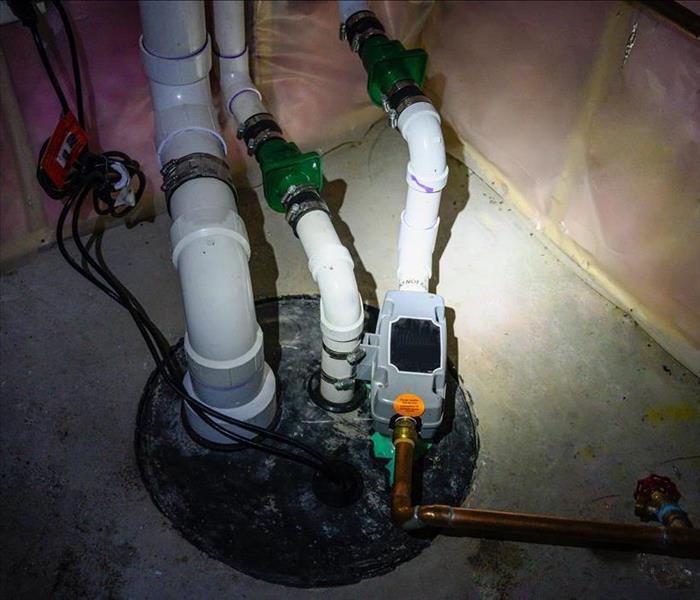 Knowing the causes of sewer backup in your home can ensure you are treating the problem correctly.
Knowing the causes of sewer backup in your home can ensure you are treating the problem correctly.
Just like many other functions in your home, when your sewer lines are working properly you often never give them a second thought. However, as soon as one of the pipes become obstructed and blocked, major damage to your home can occur. The dark liquid that forms as sewage can contain toxic waste and chemicals that are a major health hazard to humans or animals.
Knowing the causes of sewer backup in your home can ensure you are treating the problem correctly.
What are the main causes of sewer backup?
Clogs
Clogs within the main sewer line or pipes are one of the most common causes of sewer backup. This can be a result of anything that goes down into the pipes, such as toilet paper, hair, soap scum and grease. If there is only one toilet that is presenting an issue, it is probably just a clogged drain. However, if there is sewage backup every time you flush, you are probably dealing with some blockage within the main sewer line.
The easiest way to prevent this is to be cautious of the items that are being flushed down the toilet or the garbage disposal. Avoid putting napkins, diapers, and feminine hygiene products that could all risk clogging the pipes in your toilet.
Tree Roots
Another very common cause of sewer backup are tree roots interfering with pipes. Especially within older homes, it is possible for tree roots to cause a hole in the pipe by crashing into it or even crush the pipe itself by growing around it. Even if you don’t see any trees immediately nearby, it is possible that the tree roots have crossed property lines underground and may be located far away from the trunk itself.
If you can hear gurgling noises from your toilet or your drain is slow to flush, these can both be clues that tree roots are the source of the issue. If this the problem, the tree roots will need to be killed and the pipes replaces
Damaged Sewer Lines
Before plastic sewer lines became the norm, pipes were often constructed from iron and clay piping which were susceptible to lots of wear and tear over time. Old and damaged sewer pipes are another common cause of sewer backup.
Heavy Rainfall
Additionally, if there are large amounts of rainfall and flooding near your home, the sewer lines in your city can become overburdened and the water can head into the connected sewer lines.
With any sign of sewer backup, it is important to seek help immediately, no matter the cause!
Signs of Roof Water Damage
3/25/2021 (Permalink)
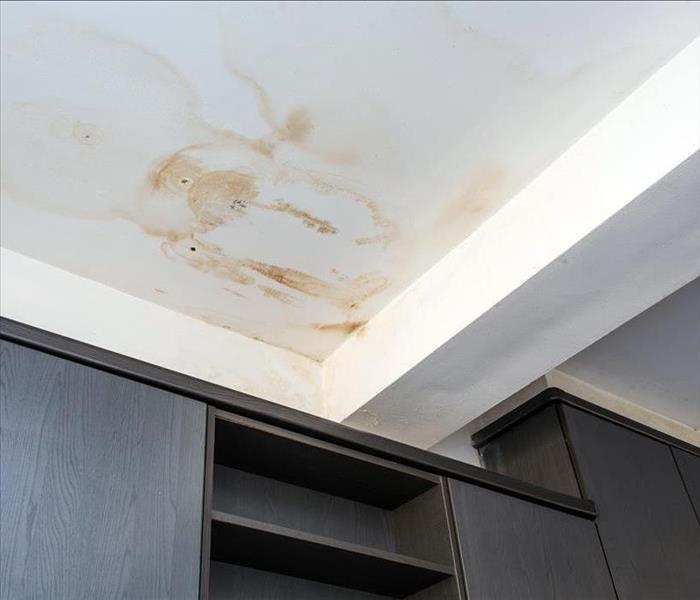 Here are the top 5 signs to look for to see if your roof has experienced water damage.
Here are the top 5 signs to look for to see if your roof has experienced water damage.
Many homeowners believe that their roof is in great condition, until it starts to leak and the damage is already done. In order to prevent this major destruction before it occurs, it is crucial to be alert of early signs of water damage. Identifying early signs of water damage to your roof can save you time and money, while ensuring the health and safety of your family.
Here are the top 5 signs to look for to see if your roof has experienced water damage.
Water Spots on the Ceiling or Exterior Walls
Different types of water spots may appear that indicate roof water damage. This is usually the most common sign of roof water damage because it is the easiest to spot. Sometimes these marks may appear brown or “rusty” which can indicate a new or previous leak.
Some other interior signs to be aware of include swollen walls or ceilings, which may appear in a bubble-like form, and often occurs as a result of collected moisture from water. Additionally, s more subtle sign of interior water damage can include decorative features, such as wallpaper, baseboards, and trim, separating from the walls. This is usually a result of excess moisture that causes wallpaper to lose its stickiness and peel off the wall or if the walls/celling is slightly swelled from moisture and the trim and baseboards are slowly separating. Any wet stains or irregular formations on the ceiling or walls may be indicative of a slow leak that is currently spreading.
If you notice any type of spot or marking that does not belong on your roof, it is a telltale sign of water damage and you should investigate the problem immediately and/or contact a professional repair company to come inspect the problem.
Gutters Filled with Granule
Granules, small particles that are made up of crushed stone and other materials, are used to create shingles for roofs. While that roof shingles will lose granules occasionally due to aging or storms, if there if a significant amount of granule in the gutter after rain it is a clear sign of water damage and a sign that your shingles need to be replaced.
Damaged or Cracked Shingles
Like dealing with granule above, there is natural wear and tear that is to be expected for shingles over time. Extreme levels of rainwater and gusts of wind can lead to missing, cracked, bent, and curled shingles. Damaged shingles can lead your roof vulnerable for more harm and it is important to make sure they are intact.
Soft or Spongy Wood Decking
If any wood decking is left soft or spongey after rain, it is a clear sign of long-term water damage. Overtime, this can lead to serious rotting and susceptible to more leaks in the future. It is very important to have any soft wood decking addressed.
Roof Debris
Finally, if there is any level of debris on the roof, there is a high change there is damage that could worsen in the future. Many times, debris, like branches, may cover up the damage so it not possible to see the full effect.
Because your roof is constantly exposed to natural elements, deterioration over the years is to be expected. However, catching any of these signs early and having a professional come to expect your roof can prevent major destruction in the future.
Kitchen Water Damage Prevention Tips
2/2/2021 (Permalink)
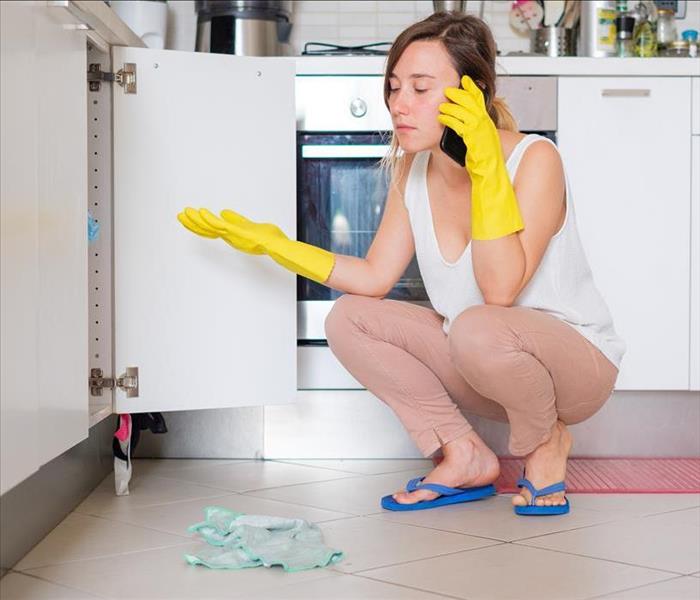 Preventing water damage in your kitchen is all about taking proactive measures to alleviate the likelihood of leaks, malfunctions, and poor luck.
Preventing water damage in your kitchen is all about taking proactive measures to alleviate the likelihood of leaks, malfunctions, and poor luck.
Homeowners in South Florida are all too familiar with the threat of water damage. From relentless rainstorms to hurricanes, adverse weather and outside factors are often the culprit of water damage in your home. While it is easy to blame external factors, there is something to be said about potential threats that are currently inside of the home. The kitchen is one of the most susceptible area of the home when it comes to water damage, in addition to the laundry room and bathroom.
Detecting water damage in the kitchen can be a challenge. What often starts as a small leak can quickly become a costly problem if not identified early. From visible damage to funky smells, being alert is critical to recognizing water quickly and taking action to mitigate its damage. Since there is moisture all over the kitchen, spotting a water damage issue can be tough. The most common problems areas for kitchen water damage include:
- Refrigerators
- Sinks
- Dishwashers
- Countertops
Since refrigerators are hardly ever moved, spotting water damage is difficult. As such, it is important to occasionally check to see if there is any water behind the fridge. Sinks are especially susceptible to water damage, so be sure to check for pooling water underneath. Dishwashers can malfunction in a number of ways, thus causing water damage. Be sure to check the base of the dishwasher regularly and be on the lookout for an excess water. Finally, countertops, particularly near the sink, are vulnerable to water damage issues. So, make sure that you check the grouting occasionally to confirm that the countertop is intact properly.
Preventing water damage in your kitchen is all about taking proactive measures to alleviate the likelihood of leaks, malfunctions, and poor luck. Kitchen repairs are typically costly and a real headache to deal with, so making sure to prevent the damage from arising in the first place is key. At SERVPRO of North Palm Beach County, our kitchen water damage experts have years of experience in handling issues both large and small. Call us today to learn more!
Avoiding Water Damage Due to Leaky Pipes
12/10/2020 (Permalink)
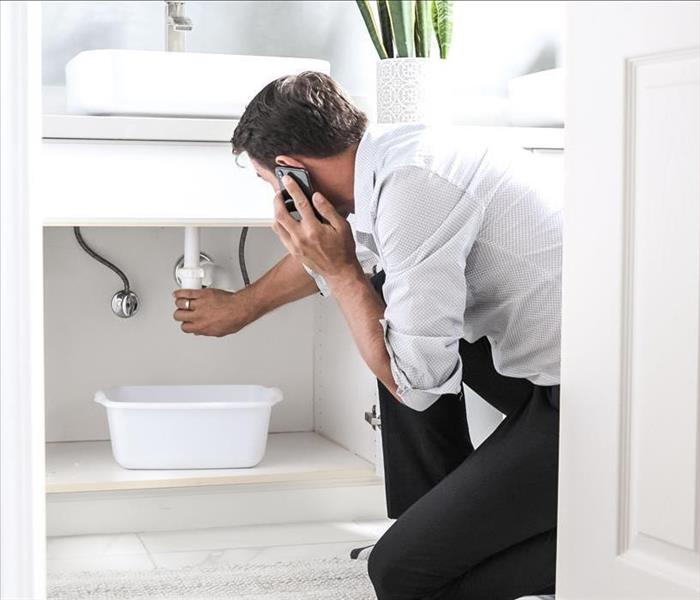 Having a basic understanding of how to check for leaks is extremely important for homeowners.
Having a basic understanding of how to check for leaks is extremely important for homeowners.
Water damage is something that many South Florida homeowners will have to deal with at one time or another. With heavy rainstorms and hurricane threats, water often finds its way into homes both large and small. While this is expected to some degree, few South Florida homeowners think about the other ways in which water damage may occur. One of the most common issues a homeowner can face is damage from leaking pipes. When undetected, leaky pipes can cause a lot of costly damage to a home.
Having a basic understanding of how to check for leaks is extremely important for homeowners. The most common places where leaks are found in a home are:
- Faucets
- Toilets
- Any types of valves throughout the home
Sometimes it is possible to notice a leaking pipe right away. For instance, if water is pooling in your bathroom around the toilet. However, there are many instances where leak detection is far more difficult, especially is the homeowner is unsure of what to look out for. The following are some of the most important tips to keep in mind while checking for leaks in the pipes in your home:
- Take a look at any older faucet gaskets and washers and inspect carefully for leaks
- Go over your water bill to determine the home’s water usage- for reference, no more than 400-500 gallons of water should be used each day for a family of four
- Get into the habit of regularly checking around the pipes in your home to ensure that there is no visible water
- Test your toilet by dropping some food coloring into the toilet tank and then inspecting after 10 minutes to see if any color is present in the bowl
Conducting regular leak checks can save a homeowner a ton of money and grief. All too often, a leak is discovered after a lot of water damage has occurred. At SERVPRO of North Palm Beach County, we specialize in water damage repair and restoration. Contact us today and our team will take care of you immediately.
Protecting Your Laundry Room from Water Damage
10/23/2020 (Permalink)
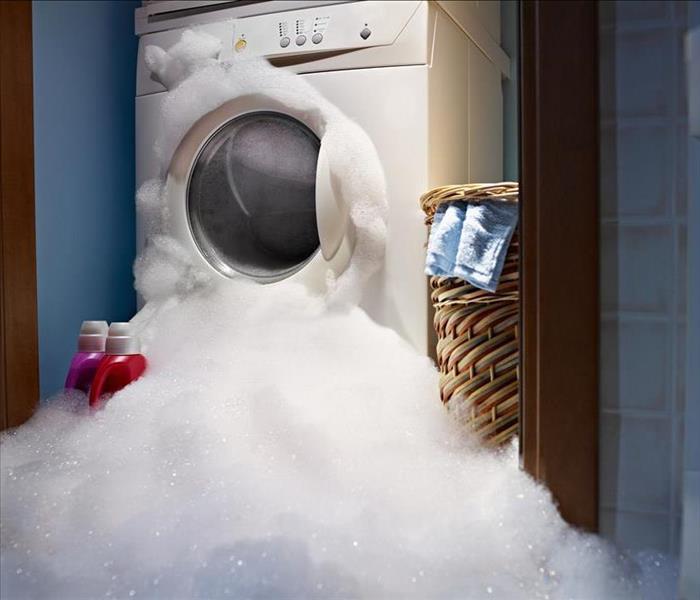 Staying on top of maintenance of your washing machine will play a huge role in reducing the chances of a laundry room fiasco.
Staying on top of maintenance of your washing machine will play a huge role in reducing the chances of a laundry room fiasco.
Few appliances in the home carry bigger quantities of water than a washing machine. When people think of water damage in their homes, they often think of the kitchen and the bathroom. However, the laundry room is one of the most vulnerable rooms in the home when it comes to the potential for costly water damage. There are generally two ways in which a washing machine causes water damage: 1) a slow, yet steady drip that takes place over time and 2) a broken water supply line that causes a massive amount of damage all at once.
Due to the fact that water damage in the laundry room can be extremely expensive and happen unexpectedly, prevention is typically the best course of action for a homeowner. In many cases, when water damage is identified in the laundry room it is too late, the damage has been done and it is time to call in professionals to clean up and restore the area. With this in mind, taking steps to prevent laundry room water damage is essential.
The following are some quick tips for protecting your laundry room from water damage:
- Regularly clean your washing machine filter
- Get in the routine of checking your washing machine lines monthly
- Install a water tray underneath your washing machine if it did not come with one
- Do not leave a load in the washing machine unattended
- Consider turning off the water when the machine is not in use
- Purchase an automatic water shutoff valve
No one wants to be in the midst of a laundry room water disaster. Staying on top of maintenance of your washing machine will play a huge role in reducing the chances of a laundry room fiasco. At SERVPRO of North Palm Beach County, we are water damage repair and restoration experts. With more than 3 decades of experience, our water damage team has seen it all. If your home has suffered from water damage, we are here to help. Call us today to learn more.
Preventing Water Damage in Your Garage
8/26/2020 (Permalink)
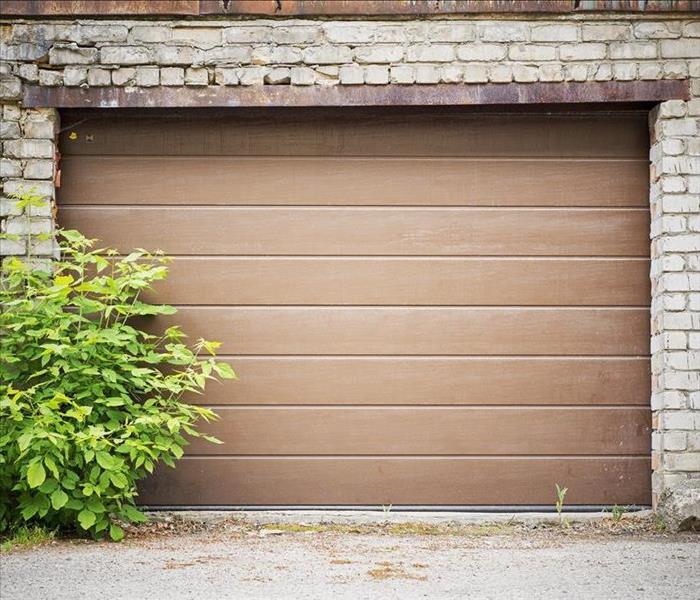 Repairing water damage in a garage can be costly, so it is important for homeowners to recognize ways to prevent it from occurring in the first place.
Repairing water damage in a garage can be costly, so it is important for homeowners to recognize ways to prevent it from occurring in the first place.
Summertime in South Florida means unpredictable rain, seemingly endless heavy rains, tropical storms, and hurricanes. As homeowners, everyone worries about the impact that this excess water may have on their homes. When we think of water damage, we often associate it with bathrooms, kitchens, and laundry rooms. All of these areas in the home have a lot of potential for leaks and thus garner most of the attention.
When it comes to water damage, a homeowner would inevitably prefer to deal with garage issues compared to bathroom, kitchen, or laundry room issues. However, garage water damage can still be a costly headache. Experiencing flooding inside of the garage can mean water damage to the floor and walls, as well as any property being stored in the garage. Therefore, taking measures to prevent water damage in your garage is key.
Repairing water damage in a garage can be costly, so it is important for homeowners to recognize ways to prevent it from occurring in the first place. There are a number of steps that can be taken to reduce the likelihood of flooding in your garage. Some of the most critical tips to preventing garage water damage include:
- Check the garage roof for leaks regularly
- Check that the weather stripping is in good condition, as this gets worn down easily and will need to be replaced somewhat frequently
- Clear out any clogs in the roof gutters near the garage
- Get in the habit of keeping the garage door closed, especially during rainy season
- Check the water heater for any potential leaks
- Replace garage door panels in a timely fashion
These simple maintenance measures have proven to make all of the difference when it comes to keeping the garage dry and water-free. Avoiding costly repairs for garage flooding means following these steps and being vigilant. As always, if you have experienced any type of water damage SERVPRO of North Palm Beach County is here to help. Contact us today for immediate assistance!
Detecting Water Damage on Your Roof
6/23/2020 (Permalink)
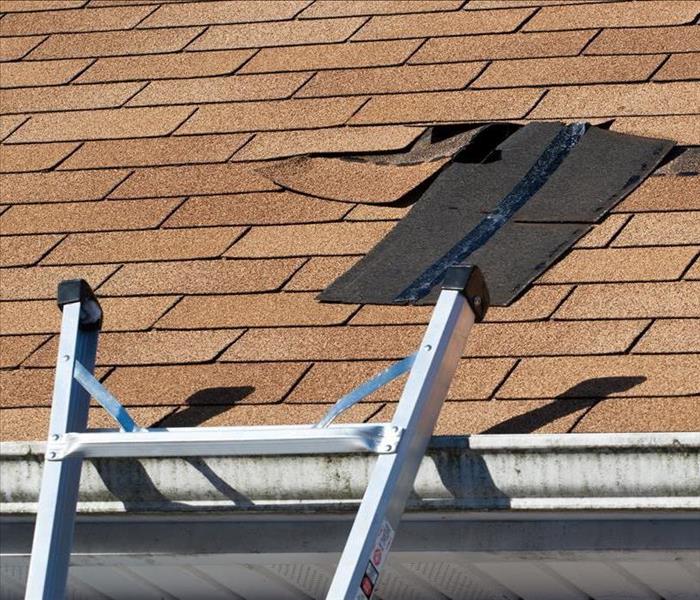 The best way to handle roof repair is to be proactive and the first step is identifying an issue early.
The best way to handle roof repair is to be proactive and the first step is identifying an issue early.
Roof repairs are something that every homeowner dreads. In South Florida, hurricane and heavy rainstorms make for a lot of wear and tear on the roof. While certain aspects of roof damage can be put on the backburner, Florida seems to highlight the issues quicker than other locations in the country. No matter where you live, however, detecting water damage on your roof as early as possible is critical to keeping costs low and keeping damage to a minimum.
Unfortunately, unaddressed water damage on the roof can lead to damage elsewhere in and out of the home. For instance, a leaky roof may begin to show itself in the form of damp interior ceilings, mold growth, or even issues in the home’s foundation. The best way to handle roof repair is to be proactive and the first step is identifying an issue early.
The following are some of the most common signs that water damage may be present on your roof:
- Flooring in the home has a changed texture
- Mold growth in the shape of rings
- Unpleasant odor is coming from the walls
- The ceiling appears to have discoloration
- Water is building up in a specific area of the home
As a homeowner, it is imperative to look out for the above signs in your home. Be sure to do spot checks regularly, especially in the areas of the home that receive less foot traffic. Places like guest rooms and attics are often ignored for months on end and if water damage has occurred the additional damages will keep piling on.
When any of the above signs of water damage on the roof are recognized it is important to take action immediately. The first step is to address the leaking water, next it is important to confirm that the leak is in fact coming from the roof. Once these two items are addressed you need to contact a roof repair company to assess the issue. Finally, you need to seek the expertise of a water damage restoration specialist to take care of the damage caused by the leak.
At SERVPRO of North Palm Beach County, we have over 30 years of experience in water damage repair and restoration. Contact our team today to learn more about your options.
Causes of a Sewer Backup in Your Home
4/28/2020 (Permalink)
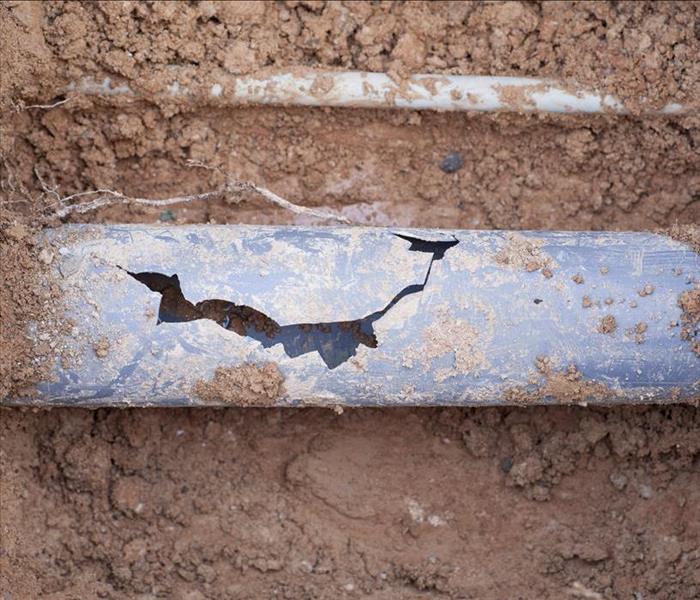 Far too many people notice an issue in the sewer lines when it is too late, leading to costly repairs and a smelly problem.
Far too many people notice an issue in the sewer lines when it is too late, leading to costly repairs and a smelly problem.
A sewer backup is one of the biggest headaches for a homeowner. Not only can a sewer backup be costly, but it also presents a dangerous health threat to you and your family. Untreated sewage create a situation for viruses, parasites, and bacteria to grow and these illness-causing organisms threaten the health of everyone living in the home.
A sewer backup happens when there is a blockage or some kind of damage that does not allow wastewater to drain properly away from your home. More often than not, this occurs in the main sewer line connecting your home to the municipal sanitary sewers. However, it could also occur in a different manner. Understanding what causes a sewer backup is critical to being able to prevent it from happening in the first place.
The following are the most common causes of a sewer backup in your home:
- A clog in the sewer line
- Broken or cracked pipes
- Leaky pipes combined with heavy rains
- Sewer system is installed poorly
- Never residential communities that have inefficient sewer volume
- Badly designed sewer system
- Putting things down the drain that do not belong there
- The growth of tree roots into sewer piping
- Connecting downspouts or gutters to the sewer
- Neglecting to inspect sewer lines when signs arise of a problem
No matter where you live in South Florida, keeping your sewer lines clear is essential to the function and overall safety of your home. Far too many people notice an issue in the sewer lines when it is too late, leading to costly repairs and a smelly problem. Keep the above causes in mind to avoid a sewer backup in your home. As always, if your home has endured any type of water damage and you are looking for reputable, professional help – call 561-881-8784 for SERVPRO of North Palm Beach County.
Recognizing Water Damage Behind Your Walls
3/4/2020 (Permalink)
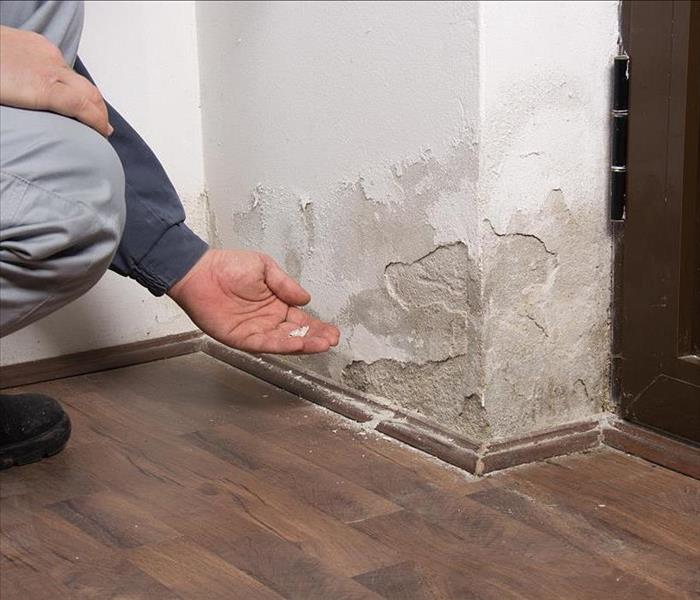 At SERVPRO of North Palm Beach County, we are the South Florida water damage repair experts.
At SERVPRO of North Palm Beach County, we are the South Florida water damage repair experts.
Water damage of any kind is a huge headache for homeowners. From costly repairs to the threat of health issues from mold growth, it is important to identify water damage as soon as possible to address the problem. One common issue is water damage in the bedroom. The real problem lies in not tackling the problem right away. Unfortunately, people who ignore the signs or do not know what signs to look for are setting themselves up for a big mess.
South Florida homeowners know that heavy rains can lead to all kinds of challenges, most notably water damage in various areas of their homes. Things like sewage backups and burst pipes are clear indicators of possible damage. But what about less obvious damage, like behind the walls of your home? These signs are less notable, as they do not stem from a major event. As such, it is important to know what to look for in order to avoid structural damage from neglecting the problem.
The following are some of the most common signs of water damage behind the walls in your home:
- Mold growth on the walls and baseboards
- Warping of the walls
- Strange, musty odor coming from the bedroom
- Ceiling and/or floor begins to buckle
- Stained walls
- Wallpaper or paint begins to bubble or peel
Any of the above issues require fast action to address the root of the water damage. A delay in tackling a water leak of any kind can lead to expensive repairs and possible mold growth. Structural damage is a threat when the water seeps into wood, insulation, or drywall. This can cause the above signs to emerge, and therefore must be taken care of immediately.
At SERVPRO of North Palm Beach County, we are the South Florida water damage repair experts. From small residential water damage to large commercial property water damage, our highly trained technicians handle it all. Have you noticed any of the above mentioned water damage signs in a bedroom in your home? If so, contact us as soon as possible and we will be right over to make it “Like it never even happened.”
7 Interesting Water Damage Facts and Figures
1/14/2020 (Permalink)
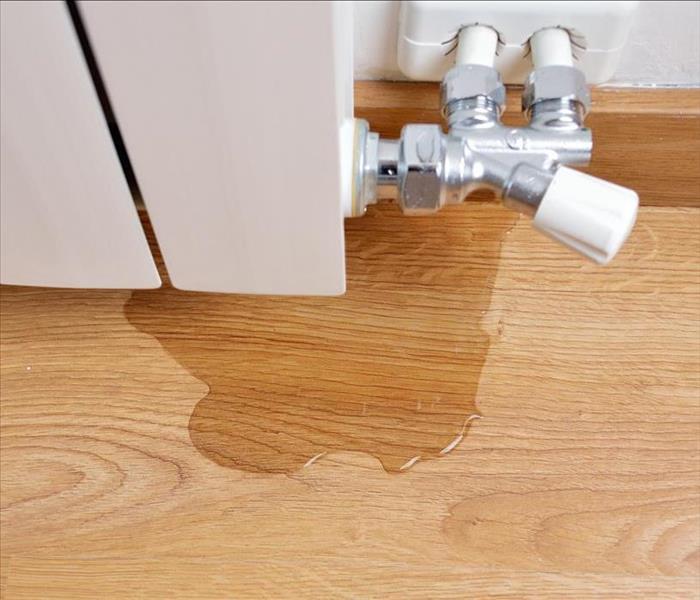 No matter what the issue may stem from, addressing water damage immediately is critical to reducing potential damage and overall cost.
No matter what the issue may stem from, addressing water damage immediately is critical to reducing potential damage and overall cost.
From storm damage to flooding and from leaking pipes to appliance disasters, water damage is something that every homeowner fears. While the damage done varies greatly on a case by case basis, any type of water damage in a home is cause for concern. Why? For starters, mold can begin to grow in as little as 24 hours after water damage occurs. When left untreated, this can lead to serious damage and costly repairs.
In addition to the threat of mold growth, water damage has the capacity to ignite a snowball effect of issues in the home. Being aware of some of the facts surrounding water damage is important so that homeowners can remain savvy and proactive in keeping their property in top condition. The following are some water damage facts and figures that we found interesting:
- A 1/8-inch pipe crack can results in 250 gallons of leaked water
- A homeowner spends an average of $1,100 to $4,500 for water damage repair or water damage restoration
- Carpet takes 1-2 days to dry following water damage
- ¾ of all water heaters fail within the first 12 years
- The most common cause of water loss comes from plumbing supply system problems
- Washing machine supply lines typically stop working within 9 years
- A typical household leak can release over 10,000 gallons of water annually
No matter what the issue may stem from, addressing water damage immediately is critical to reducing potential damage and overall cost. Far too many homeowners delay calling a water damage restoration company when a leak is detected. Unfortunately, even the slightest delay can greatly increase the chance of costly damage and mold growth.
At SERVPRO of North Palm Beach County, we are water damage repair and restoration experts. Our high-trained staff is on call 24/7 to respond to emergencies both big and small. Call us today to learn more!
Avoiding Flood Danger in Florida
11/15/2019 (Permalink)
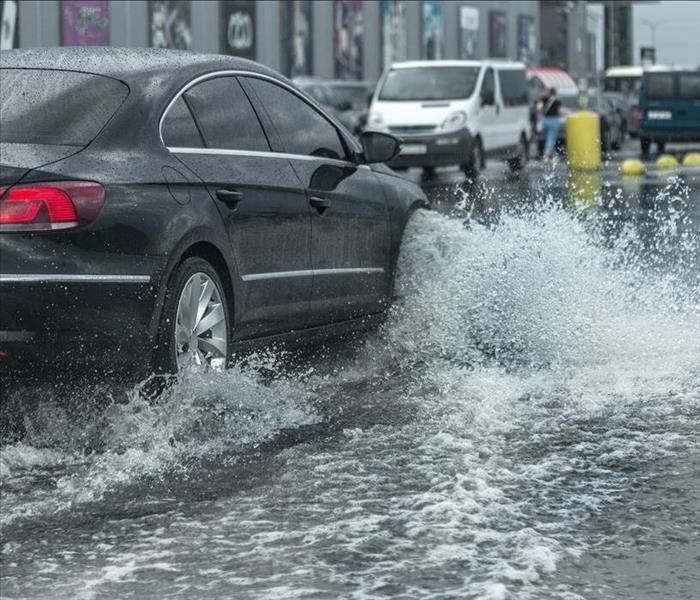 Our subtropical climate mixes with over a thousand miles of coastline to create a recipe for possible floods.
Our subtropical climate mixes with over a thousand miles of coastline to create a recipe for possible floods.
From coast to coast, flooding is an issue throughout the United States and even across the globe. In fact, research points out that rising sea levels places nearly 4 million homes at risk for flooding over the next 100 years in America. As a peninsula state, Florida is one of the most vulnerable states in the entire country, making it especially concerning for South Florida residents. As such, it is important to be educated about flooding in order to make the safest decisions possible in the event of a disaster.
While the risk of flooding is growing year after year, history has already highlighted the potential danger involved. Some of the most notable floods over the years include:
- Okeechobee Hurricane of 1928
- Cape Sable Hurricane of 1947
- Hurricane Dora in 1964
- Tropical Storm Fay in 2008
- Tropical Storm Debby in 2012
With this in mind, it is important for all Floridians, especially those who live near the coasts, to be aware of the dangers associated with flooding. Our subtropical climate mixes with over a thousand miles of coastline to create a recipe for possible floods. The following are the areas in Florida most at risk to storm surge flooding today:
- Miami, FL
- Sarasota, FL
- Tampa, FL
- Fort Meyers, FL
When a big storm is coming, it is absolutely critical to pay close attention to NOAA Weather Radio. In doing so, you will be able to monitor the storm’s impact and make the appropriate decisions for you and your family. In addition, now is the time to have your property evaluated to determine how vulnerable your home is to flooding.
As with all emergencies, SERVPRO of North Palm Beach County is dedicated to serving our community in their time of need. Our water damage experts are here to help no matter how big or small the flood damage may be. Contact our team today to learn more!
What Causes Water Damage in Your Home?
9/28/2019 (Permalink)
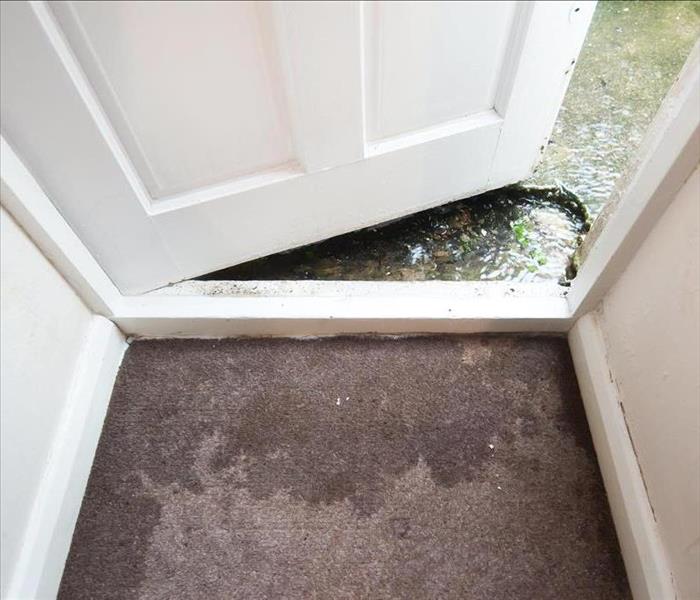 At SERVPRO of North Palm Beach County, we provide 24-hour emergency service to residential water damage problems both large and small.
At SERVPRO of North Palm Beach County, we provide 24-hour emergency service to residential water damage problems both large and small.
South Florida homeowners are all too familiar with the threat of water damage. From heavy rains all year long to air conditioning leaks to washing machine fiascos, it seems like the possibility of in home water damage lurks around every corner. A large number of water damage issues are easy to deal with, but only if they are identified right away. All too often, however, slow leaks or subtle stains are ignored for many months as the water damage builds and builds until it is a major problem.
Recognizing some of the most common causes of water damage in the home is one of the best defenses against costly repairs and frustrating restorations. Not only will spotting water damage early on keep your costs down, but doing so will prevent mold growth from occurring, which is important for your family’s health. The following are some of the most common causes of water damage today:
- Leaking pipes
- Dripping toilets
- HVAC issues
- Pressure in washing machine supply lines
- Heavy rainfall
- Problems with gutters
- Crawl space water buildup
- Backed up sewer lines
- Problems with home appliances like sinks, washing machines, dishwashers, or refrigerators
Fixing residential water damage issues does not have to be a major expense, but homeowners must be vigilant in looking out for signs. As such, it is important to check around the above areas in your home and ensure that there is no visible signs of damage. In addition, it is important to take notice of musty smells in those areas, as that can be a sign of water damage not visible to the eye.
At SERVPRO of North Palm Beach County, we pride ourselves on our ability to provide 24-hour emergency service to residential water damage problems both large and small. Our water restoration team is highly trained with the most advanced water removal equipment and drying techniques. Call our office today to learn more!
Water Damage in Your Laundry Room
8/14/2019 (Permalink)
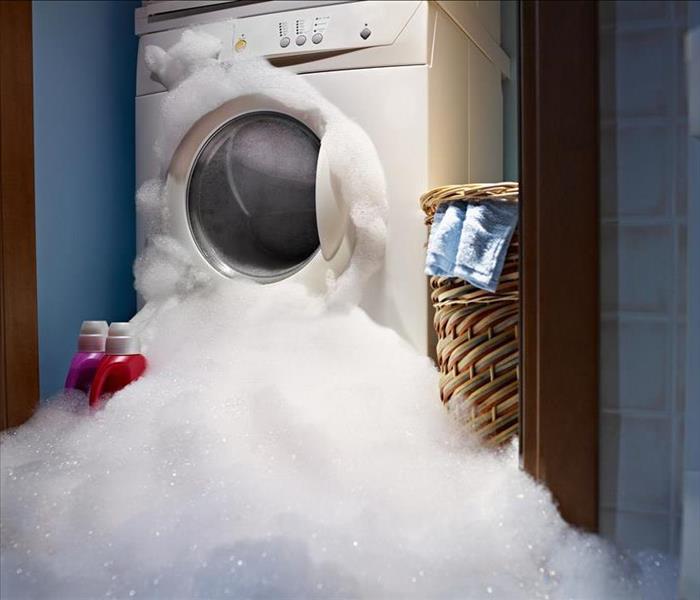 South Florida homeowners must be aware of the threat of a laundry room leak in order to take steps to prevent it from occurring.
South Florida homeowners must be aware of the threat of a laundry room leak in order to take steps to prevent it from occurring.
Water leaks in the home most commonly occur in the kitchen and the bathroom. However, the laundry room is another hotspot for water damage issues. South Florida homeowners must be aware of the threat of a laundry room leak in order to take steps to prevent it from occurring. Plumbing maintenance is by and far the most effective means of prevention. Since the washing machine is the biggest culprit of water damage, it is important to do regular checkups on the system to ensure that is functioning properly.
Massive volumes of water are pulled in and out of the washing machine with each use. In order to regulate the temperature, the machine is connected to the hot and cold water valves. When the washing machine is not being used, pressure has the capacity to build up in those valves and cause a leak. As such, extra cautious homeowners choose to shut off those valves when they are not using the washing machine.
Recognizing signs of water damage in the laundry room early is the key to preventing further damage. The following are the most common signs of laundry room water damage:
- Leaks at the hose connections for both the hot and cold water lines
- Cracks or kinks in the hose
- Thoroughly check the discharge line
- Warped, bubbled, or damp floor
- Discolored walls
- Mold growth
It is also important to keep a 3-4 inch gap between the laundry room wall and the supply connections in order to prevent damage or kinking in the hoses. If suspect that there may be water damage in your laundry room, it is important to act fast to prevent further and more costly damage. At SERVPRO of North Palm Beach County, our water damage experts are available 24 hours a day, 7 days a week. Contact us today to learn more!
Protecting Your Home from Florida’s Heavy Rains
7/5/2019 (Permalink)
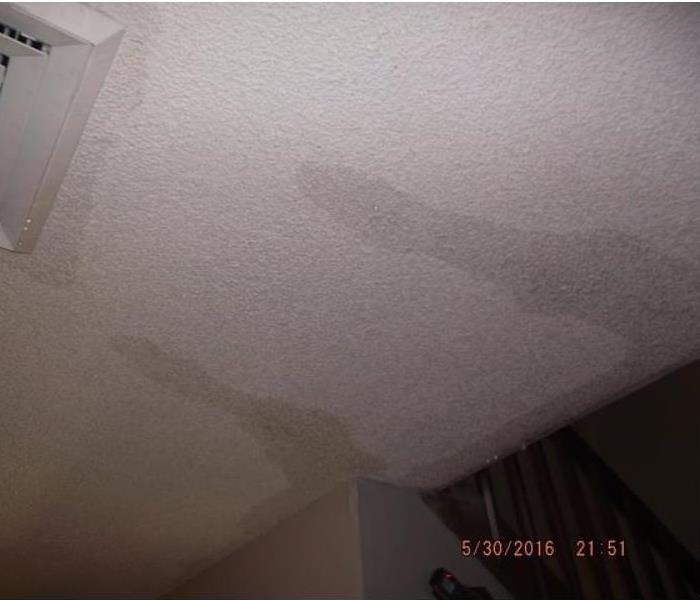 Heavy rains in Florida are inevitable, especially during the summertime. Be a proactive homeowner and save yourself from future water damage headaches
Heavy rains in Florida are inevitable, especially during the summertime. Be a proactive homeowner and save yourself from future water damage headaches
South Florida residents have grown accustom to massive downpours. During the summer months, an afternoon shower or thunderstorm is nearly inevitable. While this makes the grass grow thicker and greener, the reality is that these heavy Florida rains can really do some damage for homeowners across the state. Unlike hurricane or storm damage, water damage from heavy rains can come on slowly and go largely undetected until it is too late.
Some home issues that come from water damage can be minor and easy to fix. Conversely, there are some major issues that can arise from Florida’s heavy rains. Things like cracks in the home’s foundation, wood rot, and mold can bring major structural consequences to a home. As such, protecting your home from Florida’s heavy rains is imperative.
As a South Florida homeowner, keep in mind the following water damage prevention tips:
- Maintain your roof by regularly monitoring issues and fixing any necessary repairs
- Make sure all of your doors and windows are sealed properly
- Keep your gutters clear of leaves and debris
- Inspect your downspouts to confirm they are long enough to funnel the water away from the house
- Check out the ceilings throughout your home to ensure there is no signs of leakages
- Look for discoloration of the walls and ceilings
- Ensure that the foliage and trees surrounding your home are well maintained and trimmed
- Be mindful of your air vents during particularly heavy rains
Heavy rains in Florida are inevitable, especially during the summertime. Be a proactive homeowner and save yourself from future water damage headaches. However, if your home has sustained water damage or storm damage, SERVPRO of North Palm Beach County is here to help. Contact our water damage experts more information.
Water Damage on Your Roof
4/26/2019 (Permalink)
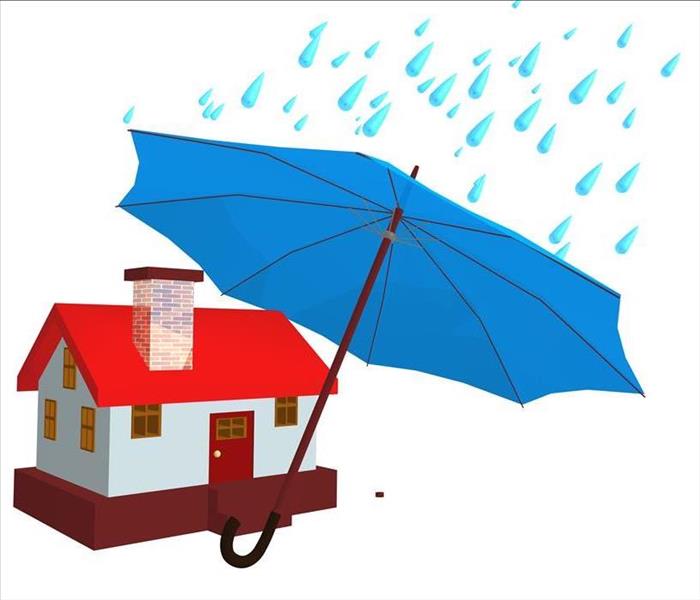 At SERVPRO of North Palm Beach County, our highly trained water damage professionals are ready to handle any size restoration project.
At SERVPRO of North Palm Beach County, our highly trained water damage professionals are ready to handle any size restoration project.
Roof repairs and replacements are some of the most dreaded home repairs for a homeowner. In South Florida, heavy rains and adverse weather tend to highlight the need for roof solutions faster than in some other areas of the country. There are a number of potential signs that you may be experiencing water damage on your roof:
- Mold growing in rings
- Discoloration on the ceiling
- Water accumulating
- Changes in the texture of flooring
- Odors from the walls
While the issue stems from the roof, you may spot these roof water damage signs on the floors, walls, ceilings, attics, the home’s foundation or exterior, and even around your appliances. The key to handling a roof suffering from water damage is to address the issue immediately. Putting off dealing with roof damage can lead to massive problems in the future, including the most drastic problem of the roof caving in.
First and foremost, it is important to ensure that safety measures are taken immediately following the recognition of roof water damage. This means putting buckets down to catch dripping water. Next, you must determine if the leak is actually coming from the roof. Then, you need to consult with a roofer to determine the best course of action. Finally, contact a water damage restoration specialist to handle the issues that were caused by the leak.
At SERVPRO of North Palm Beach County, our highly trained water damage professionals are ready to handle any size restoration project. Contact us today to learn more about your options in getting your home back to normal condition!
Checking for Leaks in Your Pipes
3/28/2019 (Permalink)
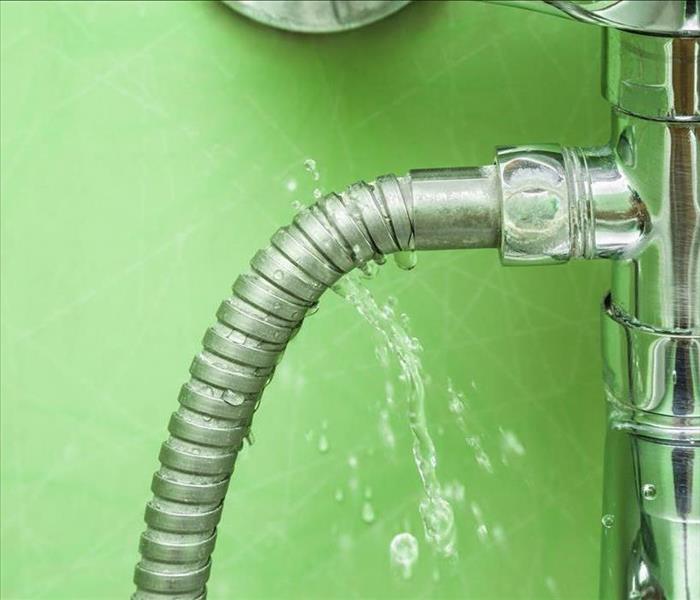 Even the smallest of leaks can cause your water bill to spike as well as a wide range of potential water damage issues throughout the home.
Even the smallest of leaks can cause your water bill to spike as well as a wide range of potential water damage issues throughout the home.
Being a homeowner means wearing a lot of different hats. From inside to outside of the home, South Florida residents are tasked with the great responsibility of maintaining their homes to be in the best shape possible. One of the most common issues plaguing homeowners in our area comes in the form of leaking pipes. Unfortunately, leaky pipes can cause all kinds of water damage headaches if left undetected. Knowing how to check for leaks is essential for homeowners looking to maintain their home to the best of their ability.
Leaks in the home are often found in:
- Toilets
- Faucet
- Any other types of valves
From water damage to costly water bills, checking for leaks is extremely important for anyone who owns a home in South Florida. Understanding the easiest ways to regularly conduct leak checks will save you both time and money in the long run. The following are some simple tips for checking for leaks in your pipes:
- Take a look at your home’s water usage, as a general rule a family of four should not use more than 400-500 gallons of water daily
- Drop a bit of food coloring in your toilet tank and check to see if the color appears in the bowl after 10 minutes
- Inspect your older faucet washers and gaskets to look for leaks
- Check around the pipes for any visible water
Even the smallest of leaks can cause your water bill to spike as well as a wide range of potential water damage issues throughout the home. If you believe that your home may have leaky pipes, it is important to check it out right away. SERVPRO of North Palm Beach County is here to help with any and all of your water damage problems. Contact us today to learn more!
Water Damage in Your Garage
1/31/2019 (Permalink)
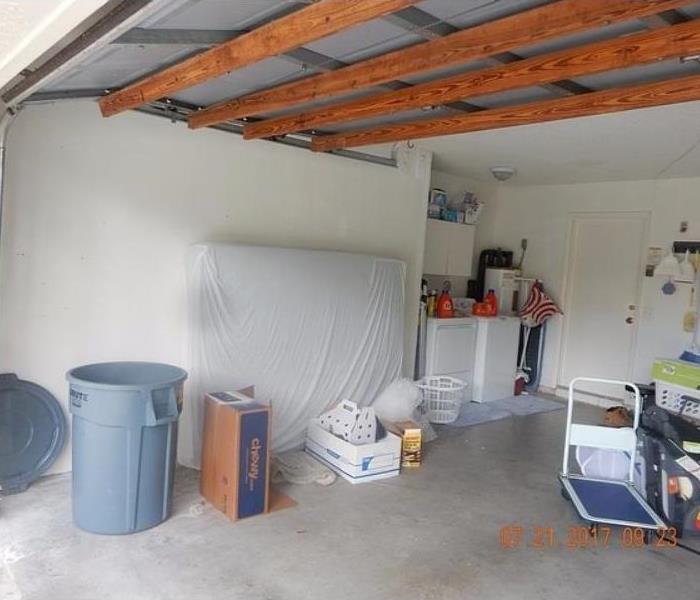 From mold growth to structural damage, water damage in the garage can lead to a number of costly issues.
From mold growth to structural damage, water damage in the garage can lead to a number of costly issues.
When compared to water damage in the main areas of your home, water damage in the garage is certainly preferable. However, no homeowner in South Florida wants to deal water damage of any kind. While garage water damage may not inconvenience you too much, it is definitely a headache that most people would like to avoid. Flooding can lead to ruined floors and walls throughout the garage, so attempting to avoid that type of water damage is imperative.
While the causes of garage water damage are few and far between, it is important to take measures to prevent the occurrence all together. Unfortunately, garage water damage is not cheap to repair. As such, keep these easy tips in mind to prevent water damage in your garage:
- Replace any worn down weather stripping
- Keep your garage door closed, especially during inclement weather
- Keep a close eye on your water heater to ensure there are no leaks
- Make sure the garage roof is not leaking
- Keep the garage door panels in good condition and replace when necessary
- Keep roof gutters surrounding the garage free from any clogs
While the above maintenance steps may seem simple, far too many people ignore them until it is too late. From mold growth to structural damage, water damage in the garage can lead to a number of costly issues. If you believe that your garage has suffered from water damage, contact the professionals at SERVPRO of North Palm Beach County for immediate assistance!
Bathtub Water Damage Problems
12/13/2018 (Permalink)
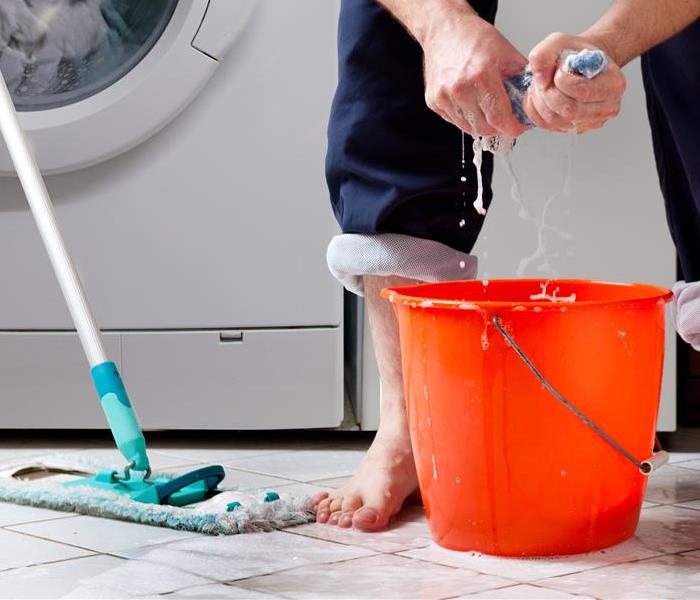 At SERVPRO, our water damage professionals can handle issues both large and small.
At SERVPRO, our water damage professionals can handle issues both large and small.
Everyone enjoys a nice bubble bath from time to time to be able to kick your feet up and relax. If you have young kids, baths are likely an everyday part of life. But with splashing and carelessness, a bathtub can quickly turn from great luxury to household headache. Preserving the bathroom is important but water damage threatens South Florida homeowners’ ability to do so.
Understanding the signs and signals that your bathtub may have caused water damage in your bathroom is important for everyone. The sooner you are able to catch a minor leak the better. Keep in mind the following common signs of water damage in your bathroom:
- Noticeable mildew or mold growing on the surfaces of the bathroom
- The walls around the bathtub begin to look warped
- A musty smell is present
- The floors near the bathtub look damaged or buckled
- Any types of gaps between the tub and tile or caulk
- The floor begins to soften
If you come across any of the above signs, you likely have some water damage present in your bathroom. At SERVPRO, our water damage professionals can handle issues both large and small. Contact us today if your bathtub is causing you problems!
9 Most Common Causes of Water Damage
9/12/2018 (Permalink)
 If you believe that your home has suffered from water damage, our team of SERVPRO water damage restoration experts is here to help.
If you believe that your home has suffered from water damage, our team of SERVPRO water damage restoration experts is here to help.
Water damage in the home, especially damage that is not identified, can cause serious issues to the home’s structure and even to you and your family’s health. Unfortunately, far too many homeowners are unaware of some of the most common causes of water damage and are therefore not prepared to prevent it in the first place. While some water damage is unavoidable, being educated on typical sources for water issues will make you more prepared to identify a problem and handle it before it becomes both costly and destructive to your home.
Residential water damage is extremely common, especially in homes throughout the South Florida region. Understanding potential sources of water issues is the first step to prevention. The following are some of the most common causes of water damage:
- Washing machine supply lines pressure
- Dripping toilet
- Busted or leaking pipes
- Sewer lines backup
- Gutters
- Water buildup in crawl spaces
- HVAC problems
- Malfunctioning appliance like dishwasher, sink, refrigerator, etc.
- Heavy rains or major storms
While the above causes are the most commonly seen challenges for homeowners, there are a variety of additional causes of water damage. Being proactive is the best way to save money and maintain your home’s interior and exterior in optimal condition. If you believe that your home has suffered from water damage, our team of SERVPRO water damage restoration experts is here to help. Call us today to learn more!
Recognizing Signs of Water Damage
8/1/2018 (Permalink)
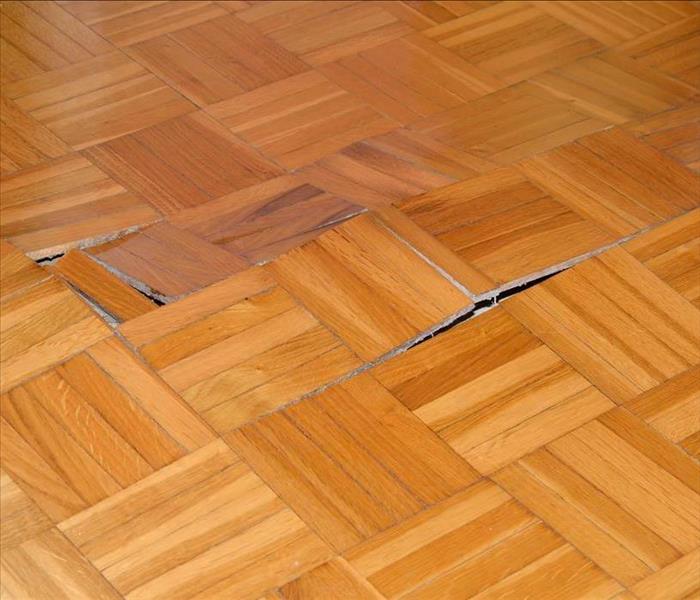 Water damage can arise in all areas of your home, but the most commonly seen areas affected are the walls, ceilings, floors, roofs, and exteriors.
Water damage can arise in all areas of your home, but the most commonly seen areas affected are the walls, ceilings, floors, roofs, and exteriors.
Homeowners in South Florida are well aware of high stressful and costly water damage can be. Water damage is caused by a wide variety of things, ranging from things like heavy rainstorms all the way to washing machine leaks. While many people think of water damage in terms of a busted pipe or a massive flood, some of the most intense damage comes from seemingly minor issues. That is why it is so important to recognize signs of water damage as early as possible, before the damage grows significantly. Fixing a water damage problem in the earliest stages is the key to reducing the amount of restoration required.
Identifying the source of the water is the very first step in detecting water damage. As water accumulates in one location, the damage begins to spread quickly, so being vigilant is imperative. The following are some of the most common signs of water damage to keep an eye on:
- Foul smells caused from bacterial growth
- Peeling paint
- Water bill increases
- Stained or discolored ceilings and/or walls
- Warping, sagging, or buckling of floors, ceilings, or walls
- Puddles of water
- Mold growth
- Hearing running water when the home is quiet
- Damage to the exterior of the home, particularly cracked roof tiles
Water damage can arise in all areas of your home, but the most commonly seen areas affected are the walls, ceilings, floors, roofs, and exteriors. If you believe that you home may have some water damage, it is important to act right away. Contact the water damage professionals at SERVPRO for immediate help!
Bathroom Water Damage Signs
5/4/2018 (Permalink)
 Our team of bathroom water damage professionals is highly trained to attack the problem immediately and make it “Like it never even happened.”
Our team of bathroom water damage professionals is highly trained to attack the problem immediately and make it “Like it never even happened.”
Homeowners dealing with water damage will agree that it can be quite the headache. The kitchen and the bathroom are the two most common areas of the home that suffer from various kinds of water damage. Bathrooms often have at least three sources of water between the sink, the shower and/or bathtub, and the toilet. As such, there are multiple places where leakage can occur. On top of dealing with leakage, bathrooms also create a lot of humidity from steamy showers or baths. When moisture levels rise in a small space like a bathroom, a number of potential issues can result.
Living in South Florida means hot days and nights, which in turn means the need for a well-functioning bathroom to clean up. Therefore, it is essential for homeowners to be aware of the most common signals that water damage may be present. The following are some of the most typical bathroom water damage signs:
- Damp, musty smells
- Floor damage like buckled, cracked, or stained tiles/wood
- Noticeable issues with discolored walls, warped walls, or wet walls
- Mold presence on the walls, ceiling, or corners
- Gaps between the grouting/calking
The ability to pinpoint possible water damage signs in your bathroom is critical to minimizing the overall damage and cost to repair. While something like an overflowing sink, tub, or toilet is an obvious cause of bathroom water damage, other issues may present themselves much slower and inconspicuously. If and when you do notice that your bathroom has some water issues, you must be proactive in seeking help. Our team of bathroom water damage professionals is highly trained to attack the problem immediately and make it “Like it never even happened.” Contact us today to learn more!
Water Damage on Your Boat
4/26/2018 (Permalink)
 Keeping a careful eye on your boat’s interior is critical to extending the life of the boat overall.
Keeping a careful eye on your boat’s interior is critical to extending the life of the boat overall.
For boat owners in South Florida, mold and mildew are true enemies. It may seem counterintuitive to think of water damage being present in a vessel meant for water. However, water damage in boats is a real issue that requires quick action to repair and restore the boat for safe use. When long days are spent out on the ocean, things like dirt, fish slime, salt, and water presence begin to wreak havoc on your boat’s interior. As such, it is important to understand the signs of water damage in your boat in order to proactively address the variety of issues that will stem from that type of damage.
With summertime right around the corner, the majority of South Florida boat owners are getting ready for back-to-back-to-back weekends on the water. Gathering your friends and family for a boat day is one of the best parts about living in Florida. So, keep these water damage signs in mind while preparing your marine vessel:
- Electrical system is corroding
- Blistering on the fiberglass
- Boat seats are cracking or damaged
- Carpet smells of mold and appears dirty and damaged
- Metal is rusting
- Warping of flooring
- Delamination
Keeping a careful eye on your boat’s interior is critical to extending the life of the boat overall. Marine vessel restoration is something that you should consider if any of the above signs are present on your boat. For more information about boat water damage, contact SERVPRO today!
Areas in Florida Most at Risk of Flooding
1/20/2018 (Permalink)
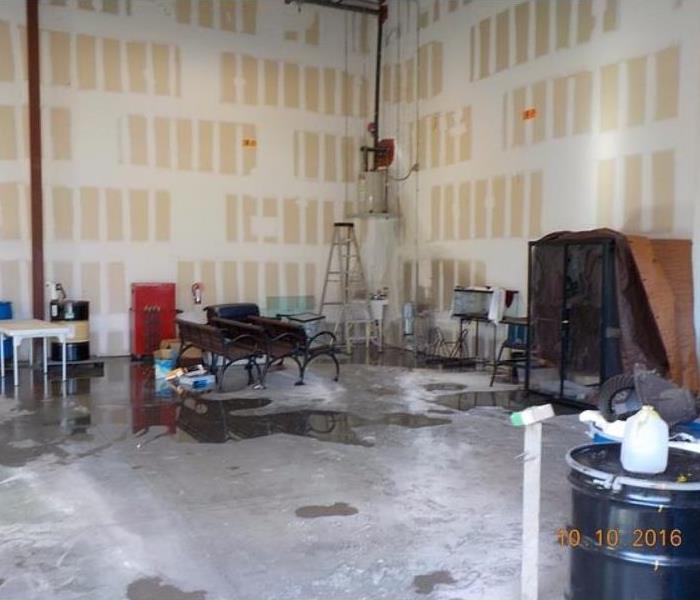 Our team of highly trained water damage specialists are ready to respond to your flood damage or water damage emergency.
Our team of highly trained water damage specialists are ready to respond to your flood damage or water damage emergency.
According to reports from the journal of Environmental Research Letters, approximately 3.9 million homes in America will be at risk of flooding over the next 100 years if the current sea levels rise just one foot. Florida ranks amongst the most susceptible to flooding in the entire country due to its southern location and being surrounded by water. U.S. News reported that the states most at risk of flooding include Florida, Louisiana, California, New York, New Jersey, Virginia, South Carolina, North Carolina, Massachusetts, and Georgia. Predictions point to the fact that homeowners in South Florida may need to start migrating to higher ground over the next few decades.
Over 1.6 million people live off of Florida’s coast and are at risk of flooding whenever a major storm hits the region. The subtropical climate paired with more than 1,100 miles of coastline makes living in Florida both a treat and a threat. First and foremost, you should be aware of whether or not your home is located in a flood zone. You can use this FEMA Flood Map Tool to determine that information. The following are the most vulnerable Florida cities when it comes to storm surge flooding:
- Tampa, FL
- Miami, FL
- Fort Meyers, FL
- Sarasota, FL
In fact, the above Florida cities all ranked in the top eight most susceptible cities in regard to storm surge flooding, according to a study from Karen Clark & Company (KCC) in 2015. No matter where you live in Florida, it is important to be aware of the flooding and the potential dangers that it may cause your home. Water damage from flooding can cause a wide range of problems in your home’s interior and exterior. When a major storm hits, SERVPRO is here to help in the aftermath. Our team of highly trained water damage specialists are ready to respond to your flood damage or water damage emergency. Contact us today to learn more!
Most Common Signs of Water Damage
10/27/2017 (Permalink)
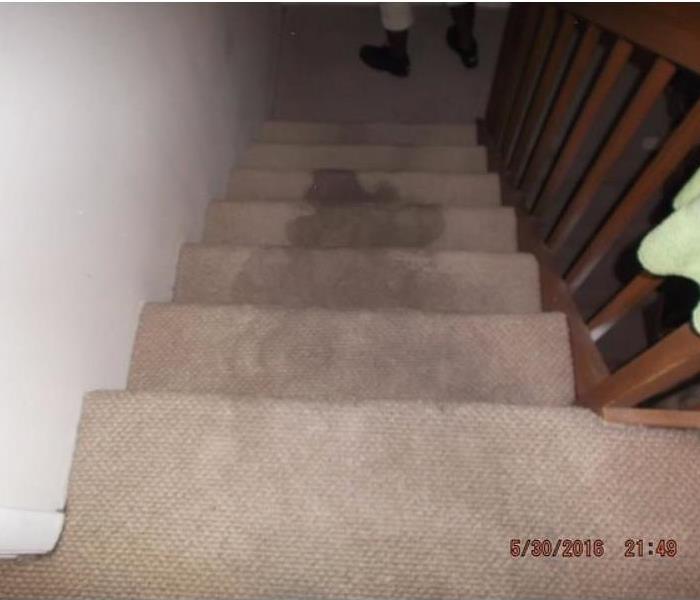 From the walls to the floors, water damage usually shows itself in one way or another.
From the walls to the floors, water damage usually shows itself in one way or another.
Water damage in a home can be a serious problem if not detected early. Unfortunately, loose water inside of a house can flow virtually anywhere it wants to and thus presents a potential issue for homeowners who are unaware of its existence. Contrary to popular belief, a leaky or busted pipe is not always easy to notice, especially when water is moving slowly. The ability to recognize the most common signs of water damage is critical to identifying the problem before it becomes a costly, major headache. While water damage repair and restoration can fix almost any losses, protecting your home or business from water damage by spotting the signs early is extremely important.
Things like flood damage or a toilet overflow show water damage in a property clearly. However, some of the most damaging issues come from the seemingly undetectable leaks. The following are the most common signs of water damage:
- Moisture in carpet or other flooring
- Painted walls with raised lines or wallpaper that begins to peel
- Dark grouting around floor tiles
- Separation between trim or baseboards from the wall
- Stains on ceilings that look like rust or watermarks
- Mold spore growth on walls or ceilings
- A musty odor in particular spots in the home
- Higher water bills
- Buckling of wood floors
- Changes in the “typical” sounds of the plumbing system
From the walls to the floors, water damage usually shows itself in one way or another. Being aware of the common signs of water damage can help homeowners to save money and the integrity of the home’s structure. If you think that your home is showing some of the above signs, contact us today to learn more about our water damage repair and restoration services!
Preventing Water Damage in Your Kitchen
7/26/2017 (Permalink)
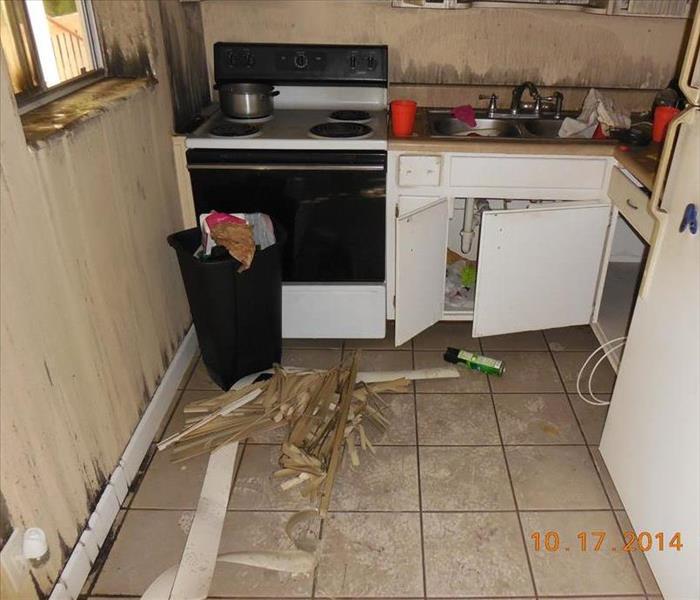 From the sink to the dishwasher and from the refrigerator to the freezer, there are many potential water leaking hazards inside of the kitchen.
From the sink to the dishwasher and from the refrigerator to the freezer, there are many potential water leaking hazards inside of the kitchen.
Water damage in the kitchen is something that homeowners often forget to consider as they tend to associate water damage with bathrooms and laundry rooms. Unfortunately, water damage in your kitchen is typically hard to recognize due to the various smells already in that area. From the kitchen sink to the dishwasher and from the refrigerator to the freezer, there are many potential water leaking hazards inside of the kitchen. Since detecting moisture in the kitchen is difficult, but it is important to understand the most effective ways to prevent water damage in the kitchen.
Water damage can arise at any moment in your home. In the kitchen, water damage is most often found due to the following:
- Dishwashers
- Refrigerators
- Countertops and Sinks
Dishwashers will sometimes malfunction, causing blockage of the main filter and thus causing a leak and eventual water damage. To prevent this, make sure that you are regularly checking the base of the dishwasher and looking for any collection of excess water. Also, look out for any leaks in the dishwasher which might be caused by an improperly sealed hose. Refrigerators often cause water damage because they are rarely moved. To prevent a potential water problem, be sure to occasionally check behind your refrigerator for any water. Finally, countertops and sinks are obviously exposed to water each and every day. To prevent water damage in these areas, check under your sink for any pooling water and make sure that the grout on your countertops is intact, as this is a sign of water damage.
Kitchen repairs for water damage can be costly and annoying. Not only will you have to pay to fix the problem, but it will disrupt your day-to-day routine since the kitchen is the focal point of most homes. In addition, mold growth is a threat when kitchen water damage goes undetected. As such, be sure to keep the above tips in mind to prevent water damage in your kitchen.
What To Do After a Flood in Your Home
6/30/2017 (Permalink)
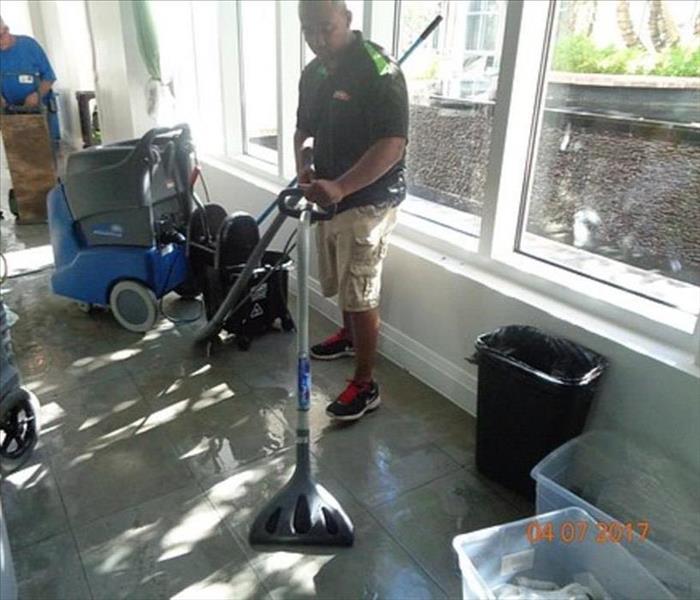 Our water damage experts are a team of professionals who will work diligently to mitigate damage and restore your home back to normal.
Our water damage experts are a team of professionals who will work diligently to mitigate damage and restore your home back to normal.
Water damage is not fun for any homeowner and unfortunately, South Florida is prone to flooding. As such, knowing what to do in the event of a flooded home is critical to mitigating the damages and getting your home back to normal as quickly as possible. From rainstorms to overflowing toilets and from leaky faucets to poorly insulated showers, water damage can occur in a myriad of different scenarios. In South Florida, the summer season brings a ton of rain and thus increases the likelihood of flooding in your home. Water damage is actually an issue nationwide, accounting for nearly 1,400 home or work indoor flooding each and every day.
The first 24 hours following any type of flooding or water damage in your home is often the most important. No matter how bad the damage may be, quick response times almost always play a vital role in reducing the amount of destruction that is suffered by the property. Keep in mind the following tips on what to do after a flood in your home:
- Use mops to remove any excess water
- Remove tabletop items and then wipe off excess water on wood furniture
- Take all cushions and upholstery and prop them up to remove water
- Pick up furniture legs where possible and place aluminum foil down between the legs and the wet carpet
- Turn on the A/C to max in order to speed up the drying process
- Take colored rugs off of wet carpet immediately
- Transfer any art objects to a dry area in the home
- Collect all loose items from the floor
- Use dehumidifiers for small spaces
- Remove any books, photographs, or important papers from wet areas
- Shut off electrical systems
- Turn on all fans in the home to circulate airflow
- Disinfect any contaminated areas with non-toxic, strong disinfectants
- Throw away any damages items
- Call water damage professionals as soon as possible to assess and repair the damage
If a pipe bursts or a heavy rainstorm strikes unexpectedly in your home, it’s difficult to avoid panicking. Homeowners must take a deep breath and contact SERVPRO as soon as they can to get professionals on the job immediately. Our water damage experts are a team of professionals who will work diligently to mitigate damage and restore your home back to normal. With our highly trained technicians, our goal is always to make it “Like it never even happened.” Call us today!
Top 10 Water Damage Tips After Flooding
3/15/2017 (Permalink)
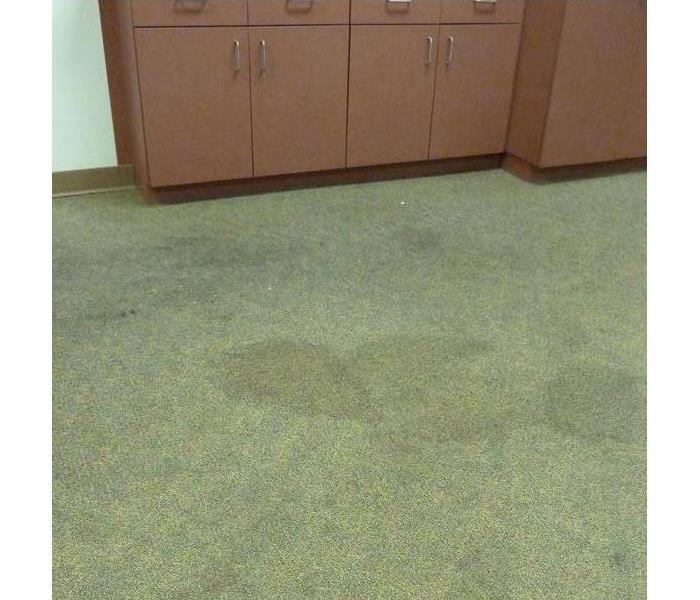 With expertise and equipment second to none, SERVPRO is your solution to water damage repair and restoration following any type of flooding.
With expertise and equipment second to none, SERVPRO is your solution to water damage repair and restoration following any type of flooding.
Water damage is a concern for anyone living in South Florida and any coastal area in the United States. Whether your home was damaged due to a bad storm that caused flooding, a bursting pipe or leak, or even heavy rains that get trapped in your house, knowing what to do immediately after is critical. In fact, many potential water damage problems can be completely avoided or solved in handled correctly and in a timely fashion. Safety should be the priority first and foremost. However, after all of the people in your home are safe and secure, it’s time to get to work on minimizing the water damage in your home.
The following are some of the top tips for handling water in damage in your home after flooding:
- Remove excess water from wood furniture, tabletop items, and also mop areas of the floor with pooling water
- Turn up the air conditioner during the summer months to increase drying rate
- Avoid any electrical hazards until a professional has arrived
- Prop up and/or remove wet cushions and upholstery
- Hang any fabrics that have gotten wet
- Remove colored items, books, or magazines from the floors or wet carpets
- Get rid of colored rugs that are near wet carpeting
- Take away any art objects to a place that is dry and safe from water hazards
- Stay out of rooms with wet, sagging ceilings
- Never use your household vacuum to attempt to remove water
The water removal and water cleanup process can be overwhelming and frustrating, especially following a big storm or major appliance leak. It is important to contact highly-trained technicians to handle the water damage in the most effective and safe manner possible. With expertise and equipment second to none, SERVPRO is your solution to water damage repair and restoration following any type of flooding.
Sewer System Backups in Your Home
10/28/2016 (Permalink)
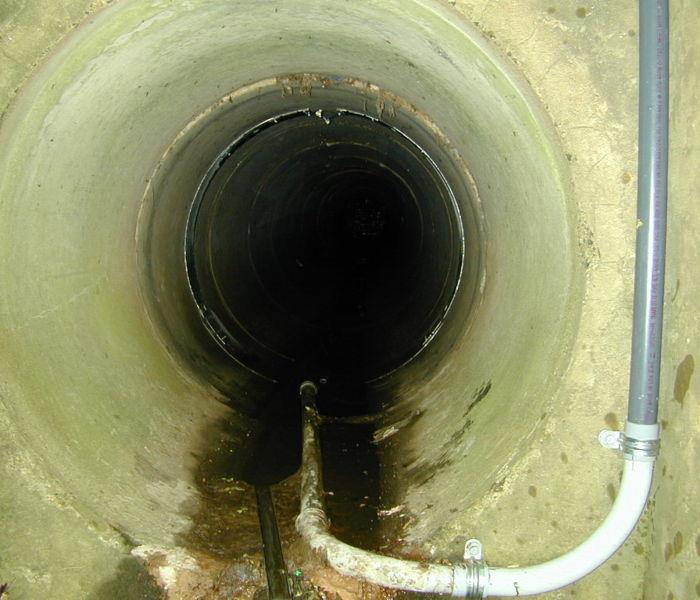 Sewer system backups cause potentially life-threatening that must be taken seriously.
Sewer system backups cause potentially life-threatening that must be taken seriously.
The aftermath of sewer system backups in your home can be very dangerous. The water from sewage backups not only present an awful odor, but it may also cause unhealthy living conditions and even property damage. Things like viruses, parasites, and bacteria may all arise from untreated sewage and these illness-causing organisms threaten the safety of anyone living in the home. As such, a sewer system backup must be cleaned and disinfected by experienced professionals in order to minimize the possibility of disease.
The following may be causes of a sanitary sewer system backup:
- Broken or blocked pipes
- Increases in rain near leaky pipes
- Insufficient system volume for newer residential communities
- Poorly designed sewer systems
- Poorly installed sewer systems
Regardless of the specific cause, sewer system backups lead to contaminated water and therefore require professional assistance to eradicate. There are three different types of contaminated water:
- Category 1 “Clean Water”: water from a clean source like a broken clean water supply line. This category 1 water can quickly become category 2 or 3 if left untreated.
- Category 2 “Gray Water”: water that has a significant level of contamination and may cause illness or discomfort if consumed. Gray water often comes from things like toilet overflows (with some urine but no feces) or dishwasher/washing machine overflow. This category 2 water can quickly become category 3 if left untreated.
- Category 3 “Black Water”: water that is grossly unsanitary and may cause severe disease or death if consumed. All contact with black water should be avoided, as it may contain harsh chemicals, microbes, and untreated sewage. This is often found from flooding rivers or sewer backup.
A professional cleaning company like SERVPRO of North Palm Beach County should be hired to disinfect and clean the interior and exterior of the home. Sewer system backups cause potentially life-threatening that must be taken seriously. Contact us today to learn more!
Recognizing Water Damage in Your Home
9/22/2016 (Permalink)
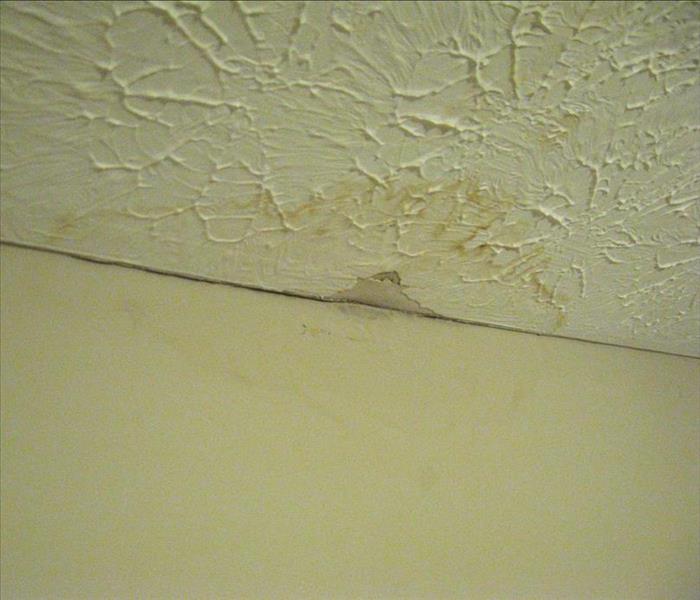 Contact our professional water restoration team at SERVPRO of North Palm Beach County in order to assess the damage and restore your home.
Contact our professional water restoration team at SERVPRO of North Palm Beach County in order to assess the damage and restore your home.
In the heart of Florida’s rainy season, it is important to understand the dangers of water damage to your home. Flooding can be caused by a variety of things from natural disasters to dishwasher leaks or washing machine leaks. Regardless of how a water damage situation occurs, handing the situation in a timely manner is the key to prevent serious destruction to your home.
The initial step in preventing this type of harm to your home is in the recognition of water damage in the first place. In some cases, water damage is quite obvious and easy to spot. In other cases, however, water in your home is rather subtle and may begin to cause damage before it is even recognized. As such, look out for the following signs of water damage in your home:
- Look for stains on the walls, ceilings, and window/door frames
- Check drywall for cracks
- Look at the floors for buckling or warping as well as dark spots on wood floors
- Feel around for damp carpeting
- Smell for odors of dampness or mold/musk
- Check areas where paint is peeling
- Look out for mold spores which often appear as discoloration
- Check around the pipes in the bathrooms, kitchen, and laundry room for leaks or water stains
- Monitor the home’s exterior looking for damaged roofing and standing water outside of the home – the home should be the highest point of your property as the ground should appear downward from the house
The primary focus following the recognition of water damage in your home must be safety. Wet materials from water damage can be dangerous to touch, move, or clean yourself. Therefore, it is very important to contact our professional water restoration team at SERVPRO of North Palm Beach County in order to assess the damage and restore your home.
Faster to your North Palm Beach County Water Damage Event
7/6/2016 (Permalink)
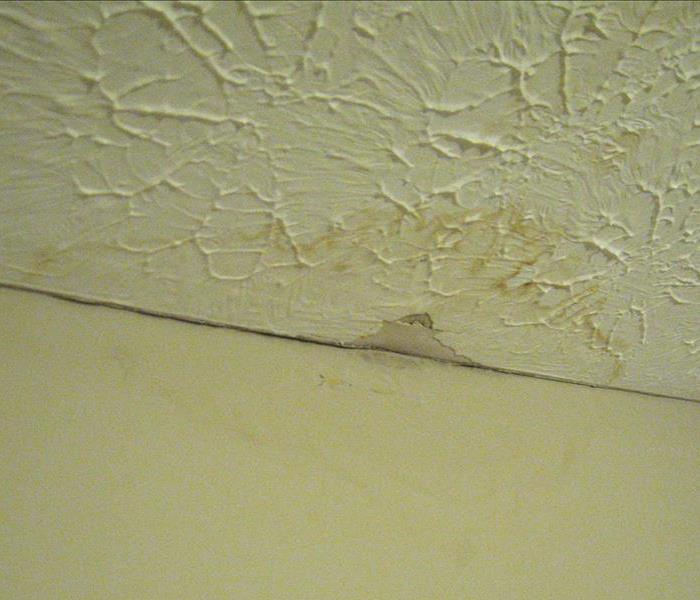 SERVPRO of North Palm Beach County provides 24 hour fire and water damage restoration service in North Palm Beach County.
SERVPRO of North Palm Beach County provides 24 hour fire and water damage restoration service in North Palm Beach County.
Flooding and water emergencies don’t wait for regular business hours and neither do we. SERVPRO of North Palm Beach County provides emergency cleaning and restoration services 24 hours a day, 7 days a week—including all holidays.
Faster To Any Size Disaster
Flooding and water damage is very invasive. Water quickly spreads throughout your home and gets absorbed into floors, walls, furniture, and more. SERVPRO of North Palm Beach County arrives quickly and starts the water extraction process almost immediately. This immediate response helps to minimize the damage and the cleaning and restoration costs.
Need Emergency Service? Call Us 24/7 – 561-881-8784
Water Damage Timeline
Within Minutes
- Water quickly spreads throughout your property, saturating everything in its path.
- Water is absorbed into walls, floors, upholstery, and belongings.
- Furniture finishes may bleed, causing permanent staining on carpets.
- Photographs, books, and other paper goods start to swell and warp.
Hours 1 - 24:
- Drywall begins to swell and break down.
- Metal surfaces begin to tarnish.
- Furniture begins to swell and crack.
- Dyes and inks from cloth and paper goods spread and stain.
- A musty odor appears.
48 Hours to 1 Week:
- Mold and mildew may grow and spread.
- Doors, windows, and studs swell and warp.
- Metal begins to rust and corrode.
- Furniture warps and shows signs of mold.
- Paint begins to blister.
- Wood flooring swells and warps.
- Serious biohazard contamination is possible.
More Than 1 Week:
- Restoration time and cost increase dramatically; replacing contaminated materials and structural rebuilding may be extensive.
- Structural safety, mold growth, and biohazard contaminants pose serious risks to occupants.
About SERVPRO of North Palm Beach County
SERVPRO of North Palm Beach County specializes in the cleanup and restoration of residential and commercial property after a fire, smoke or water damage event. Our staff is highly trained in property damage restoration. From initial and ongoing training at SERVPRO’s corporate training facility to regular IICRC-industry certification, rest assured our staff is equipped with the knowledge to restore your property.
North Palm Beach County 24 Hour Emergency Water Damage Service
6/10/2016 (Permalink)
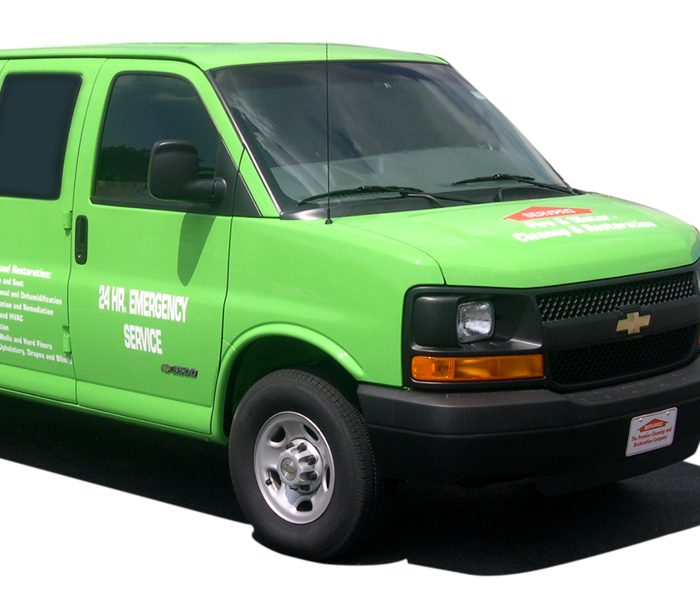 SERVPRO of North Palm Beach County provides 24 hour fire and water damage restoration service in Palm Beach County.
SERVPRO of North Palm Beach County provides 24 hour fire and water damage restoration service in Palm Beach County.
SERVPRO of North Palm Beach County is available 24 hours a day for water emergencies, large or small. When you are dealing with water damage, immediate action is crucial. A delay of just a few hours can greatly increase the severity of the water damage.
We Answer the Phone Ready to Help
Call Today - 561-881-8784
We understand that when you call us, you may be feeling confused, stressed, and vulnerable. You need an expert to guide you through this crisis. SERVPRO of North Palm Beach County has the specific water damage training and experience to help you through this tough time. We specialize in water damage restoration—in fact, it's the cornerstone of our business.
What to Expect
When you call, we will ask several questions regarding your water damage emergency. These questions will help us determine what equipment and resources to bring, including how many trained SERVPRO Professionals may be needed.
Our SERVPRO Representative will ask several questions:
- Your name and contact information
- Your insurance information (if applicable)
- The street address of the water-damaged home or business
- When did the flooding or water damage occur?
- What caused the water damage (if known)?
- Is there electricity available (on-site)?
About SERVPRO of North Palm Beach County
SERVPRO of North Palm Beach County specializes in the cleanup and restoration of residential and commercial property after a fire, smoke or water damage event. Our staff is highly trained in property damage restoration. From initial and ongoing training at SERVPRO’s corporate training facility to regular IICRC-industry certification, rest assured our staff is equipped with the knowledge to restore your property.

 24/7 Emergency Service
24/7 Emergency Service



































